semestre 3
se situer
La rédaction d’un manifeste est un rite de passage pour les étudiant·e·x·s en BA2. L’exercice les encourage à identifier les valeurs qu’iels souhaitent défendre. Sur le plan esthétique, il constitue une source d’inspiration à leur réinterprétation d’archétypes vestimentaires. En toile de fond du manifeste figurait cette année l’écologie. Les silhouette sont de fait toutes « vertes ». Le manifeste s’est aussi fait l’écho de plusieurs débats touchant l’industrie de la mode comme la question de l’inclusivité ou encore celle de la copie.
situating oneself
Writing a manifesto is a rite of passage for BA2 students. It encourages them students to define the values on which they wish to take a stand. On the aesthetic level, it provides a starting point for their reinterpretations of clothing archetypes. This year, the climate emergency formed its backdrop. Their various looks were all in fact “green”. The manifesto also touched upon industry debates such as copying and issues surrounding inclusivity.
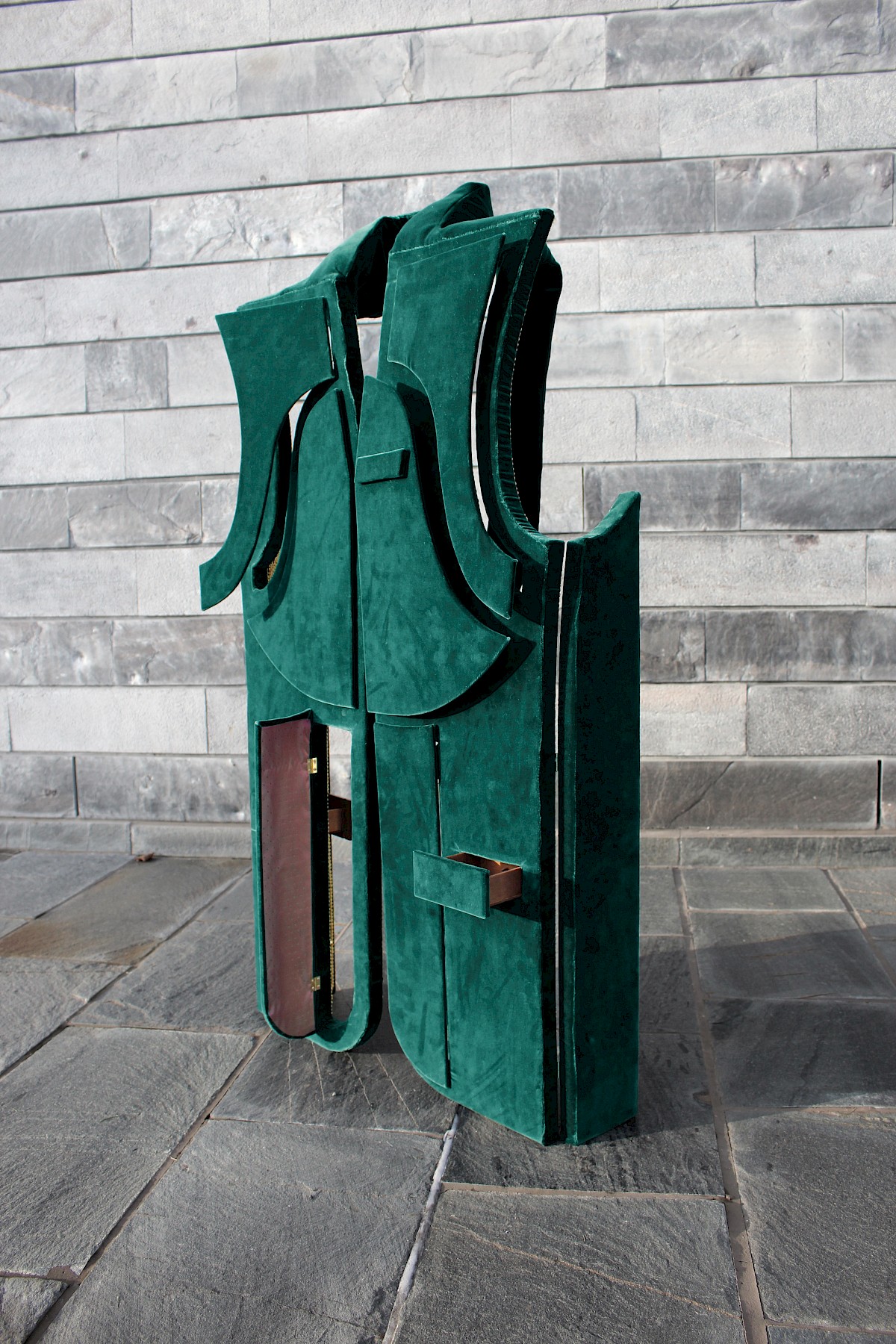
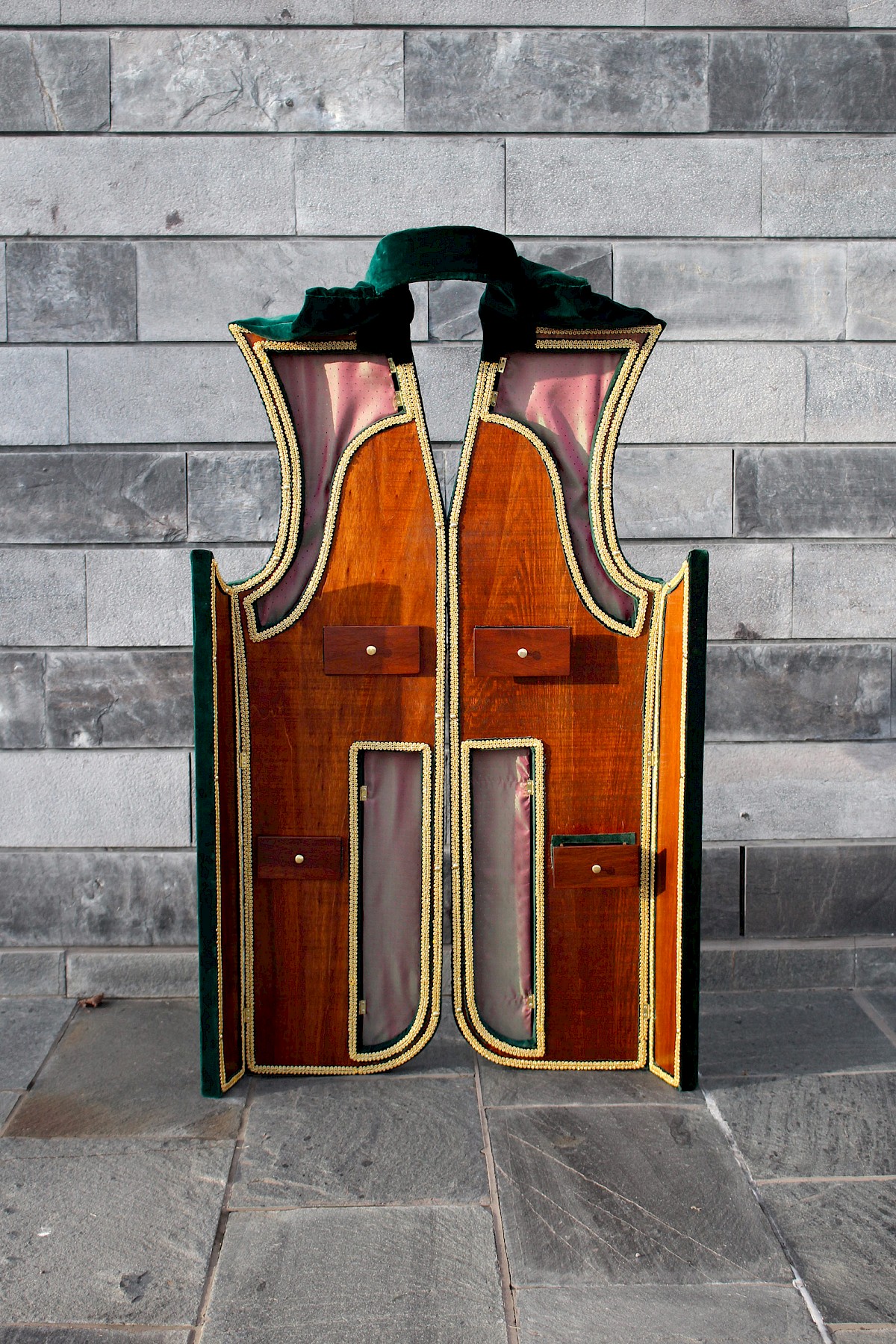
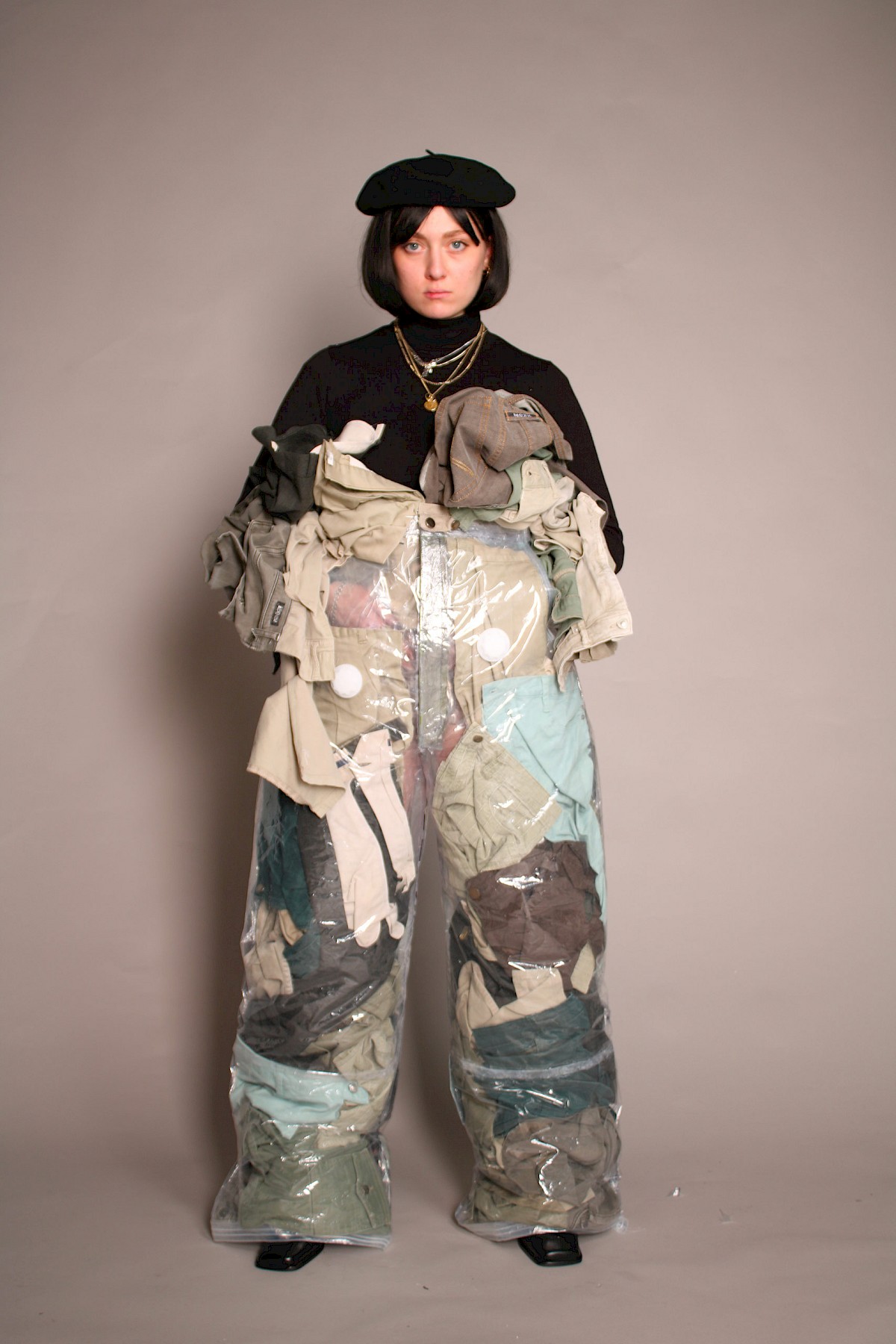
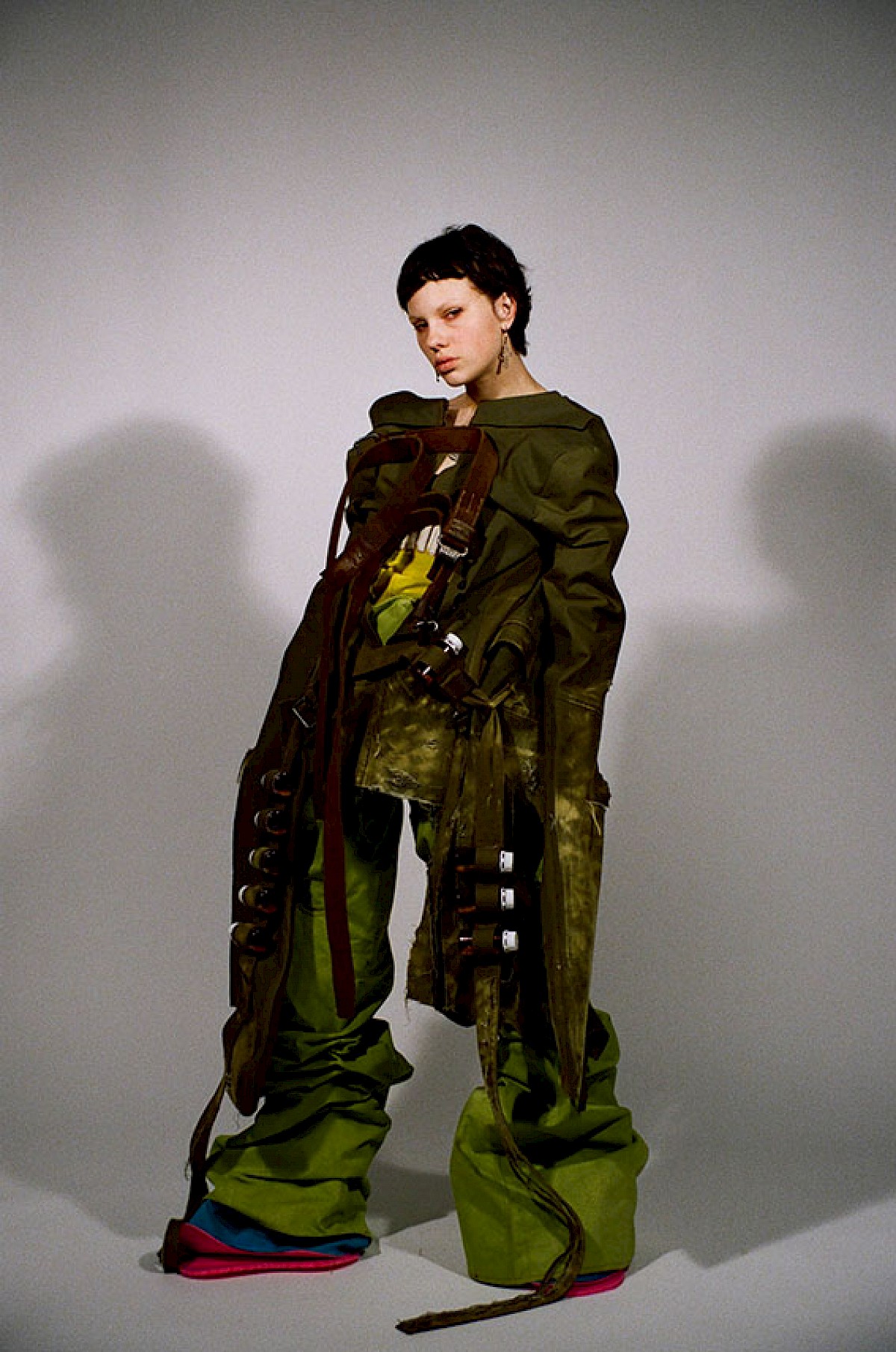
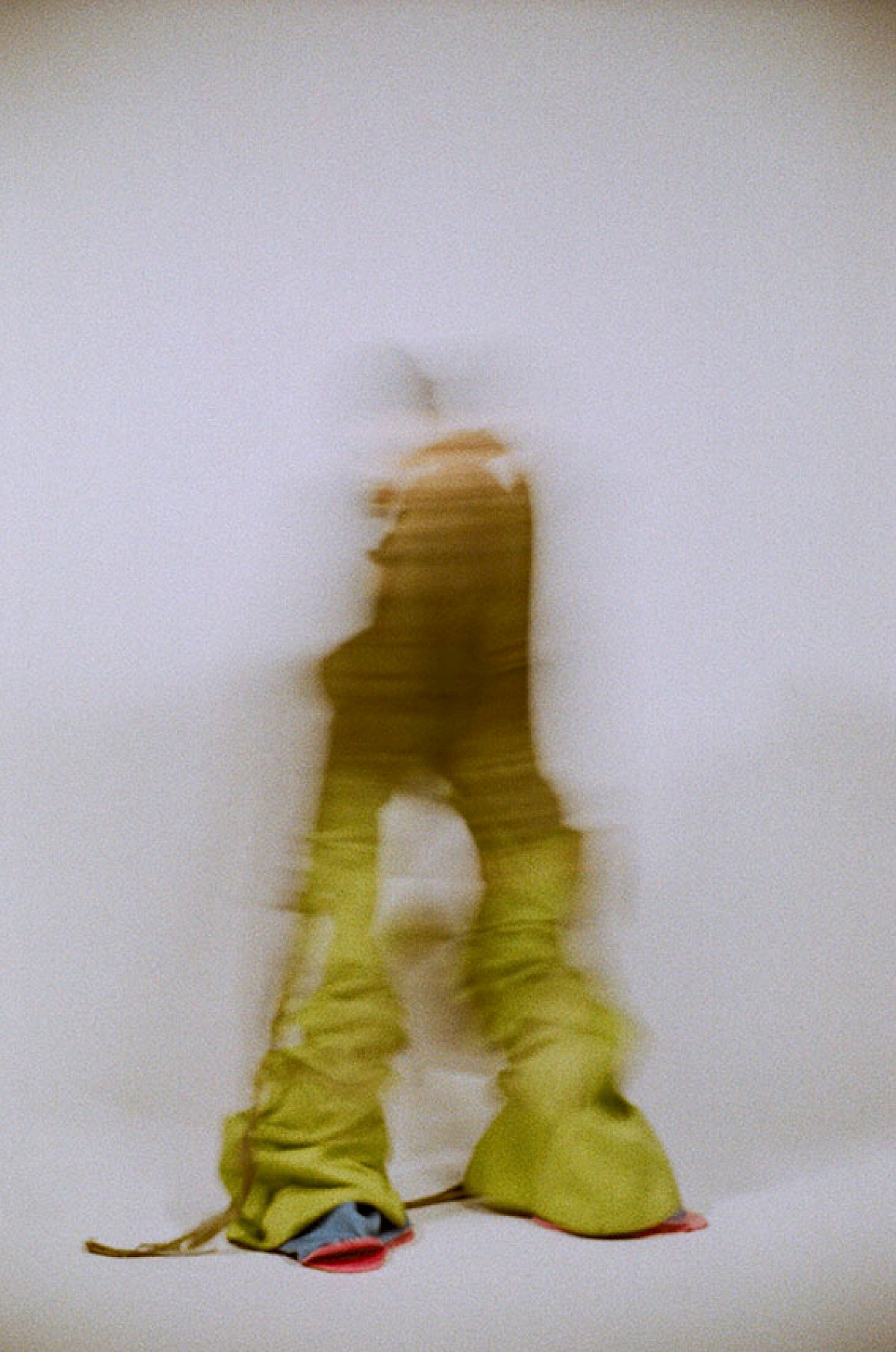
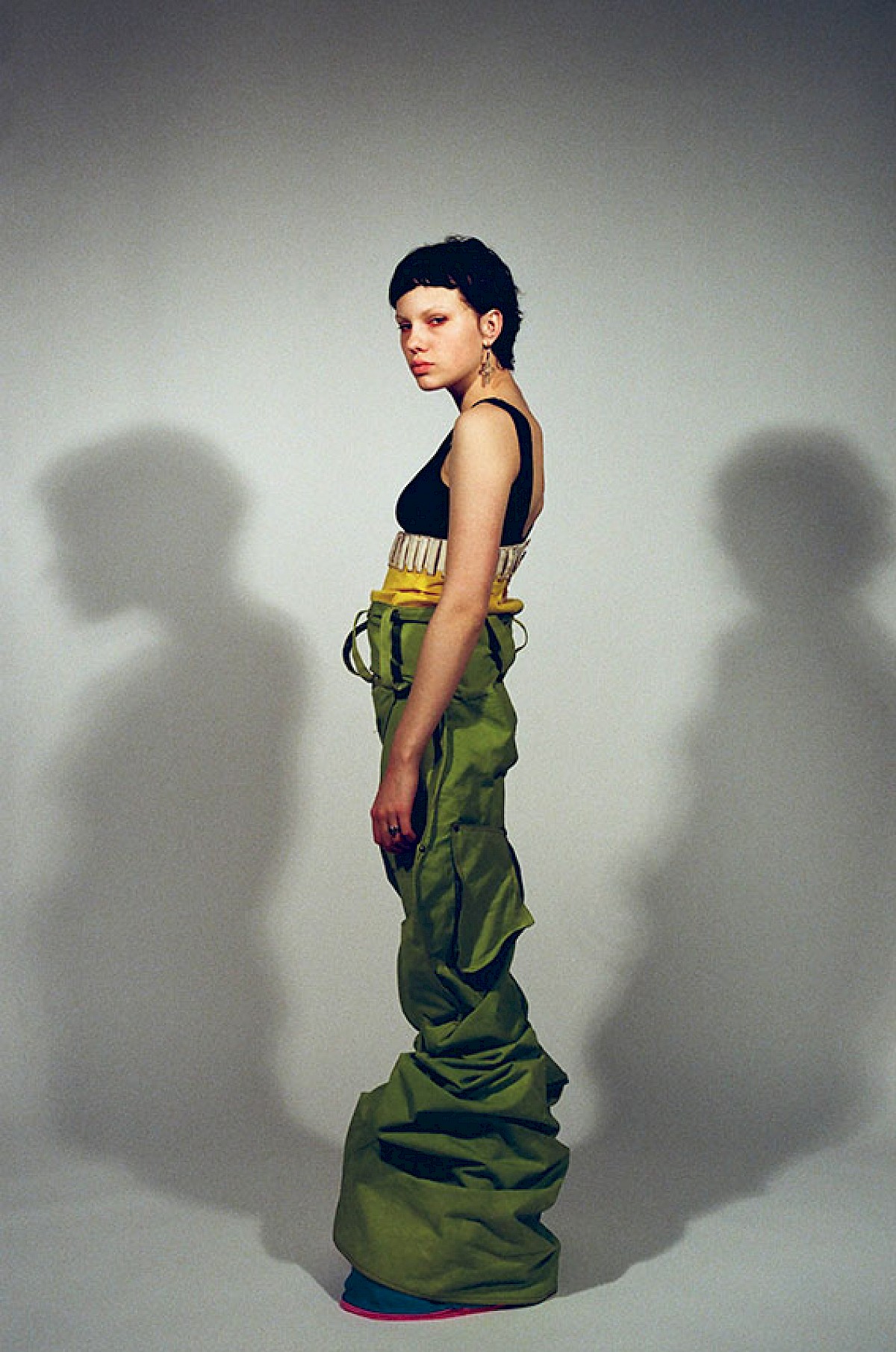
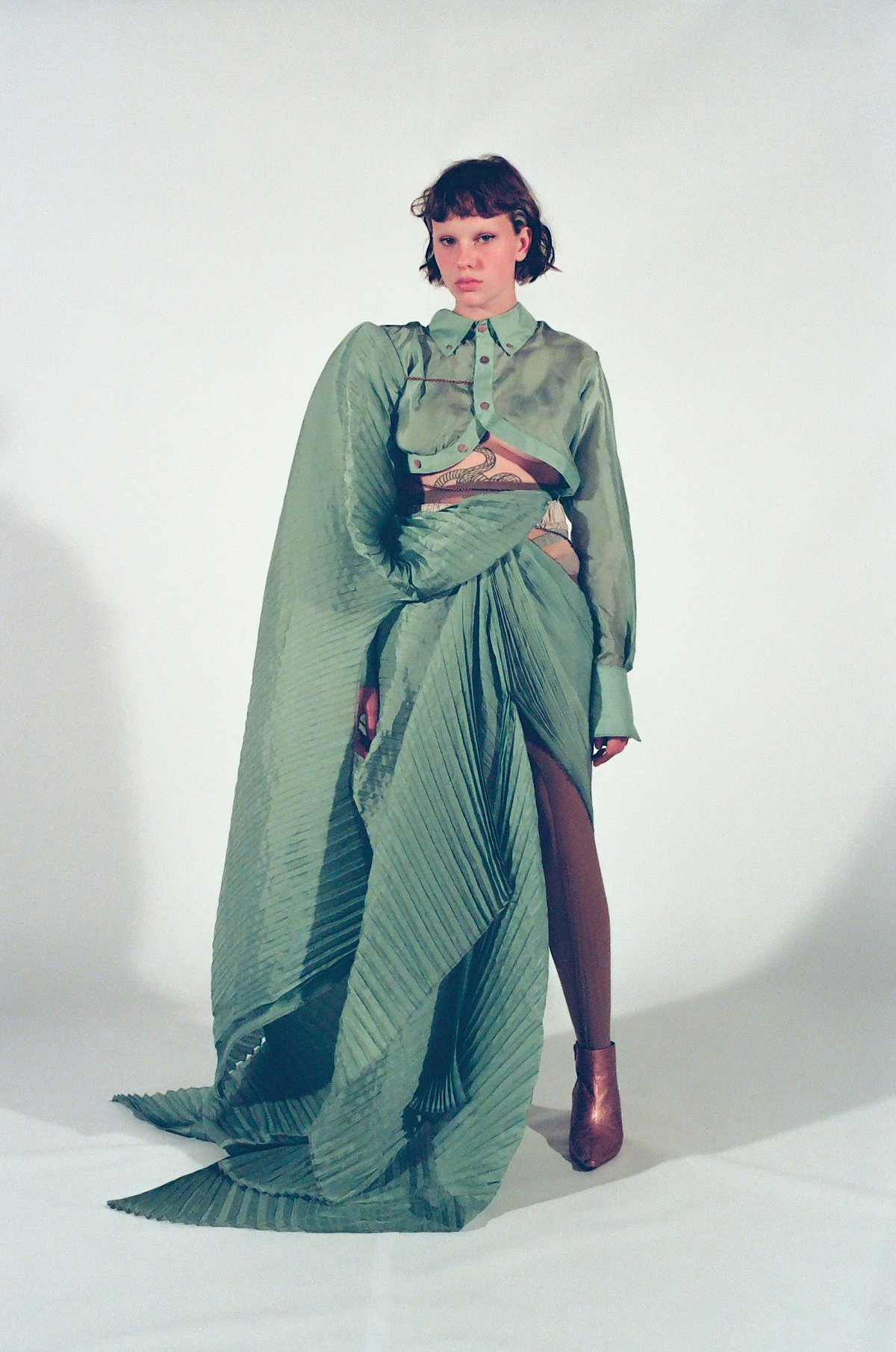
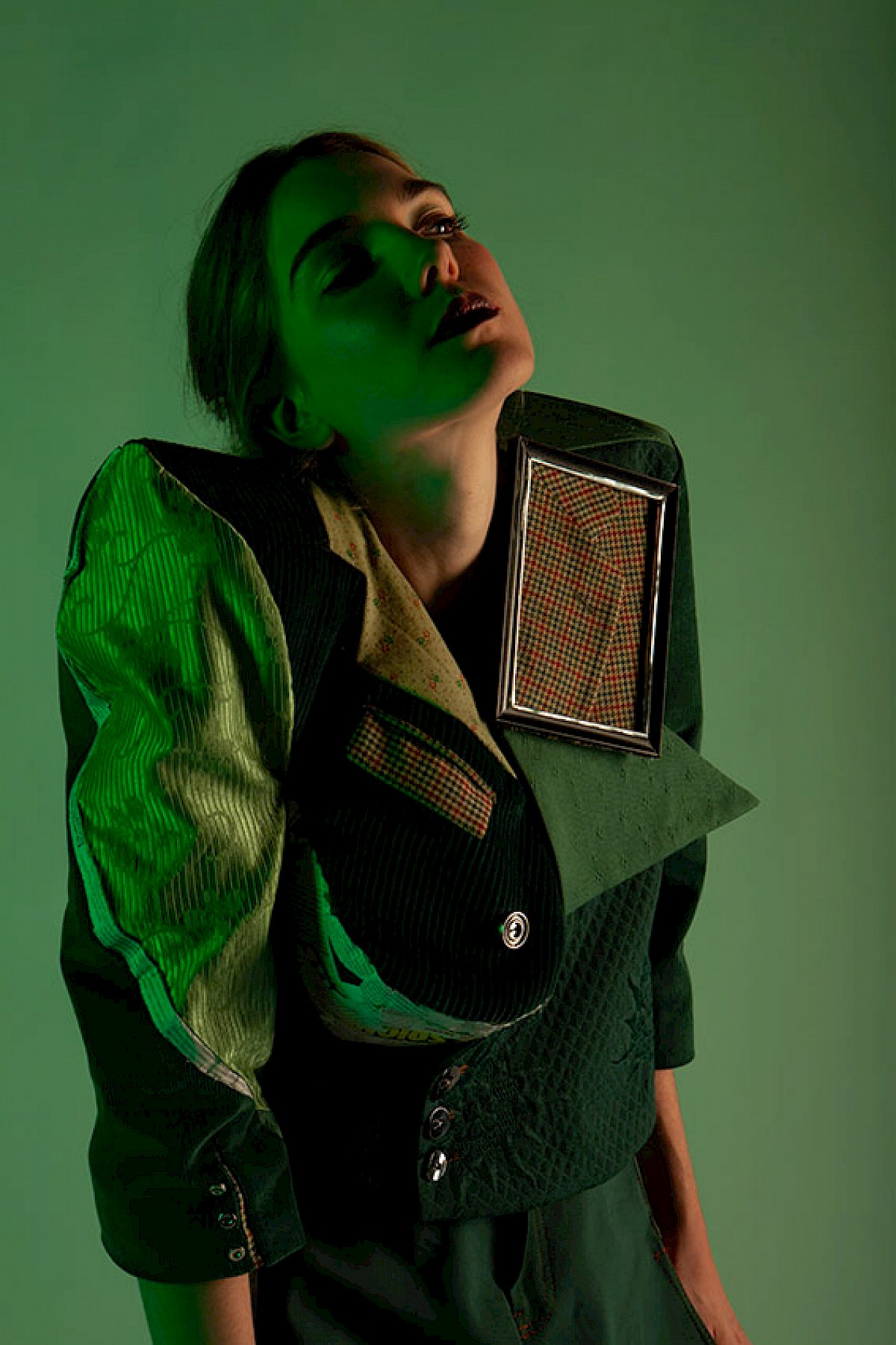
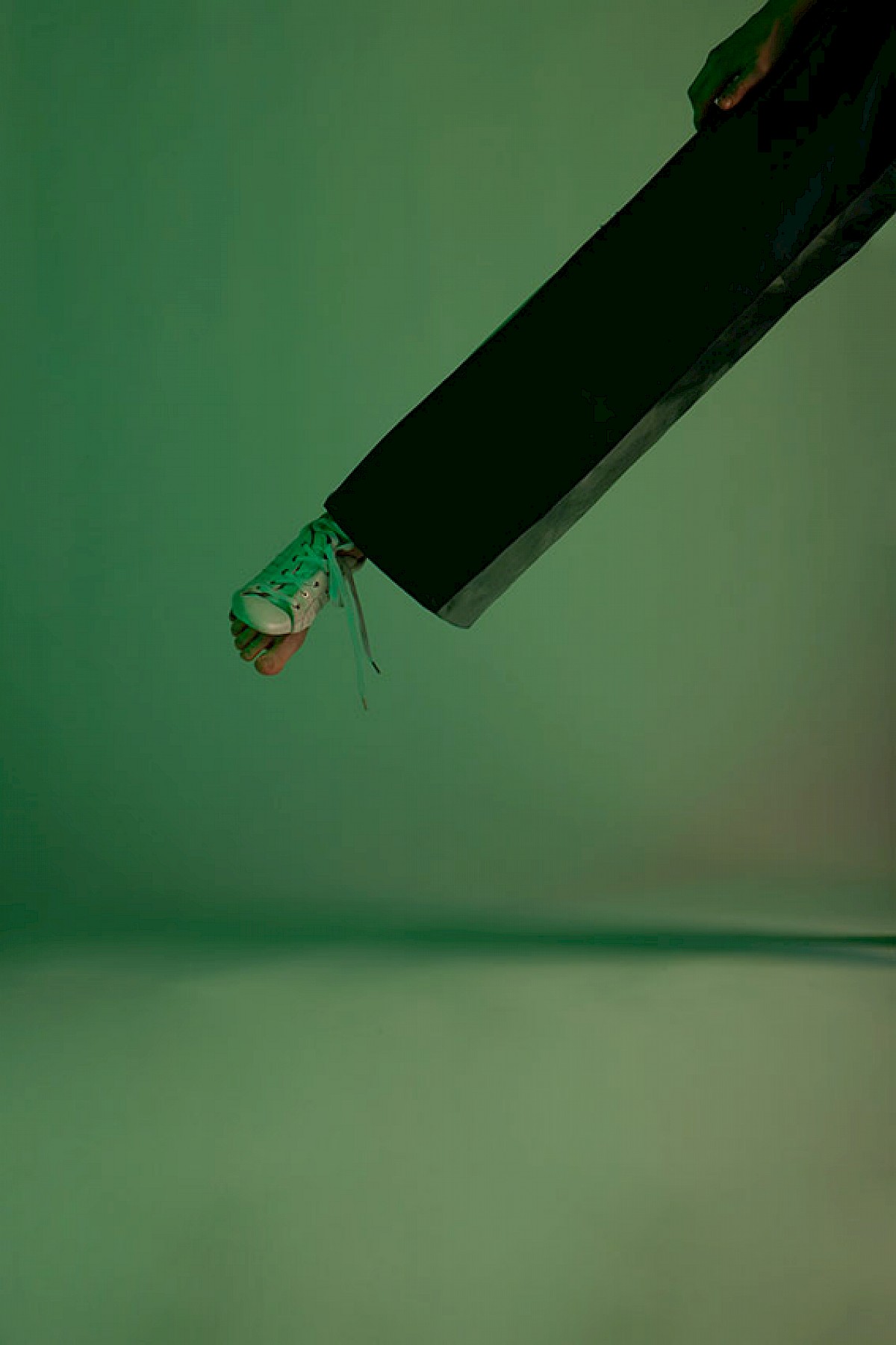
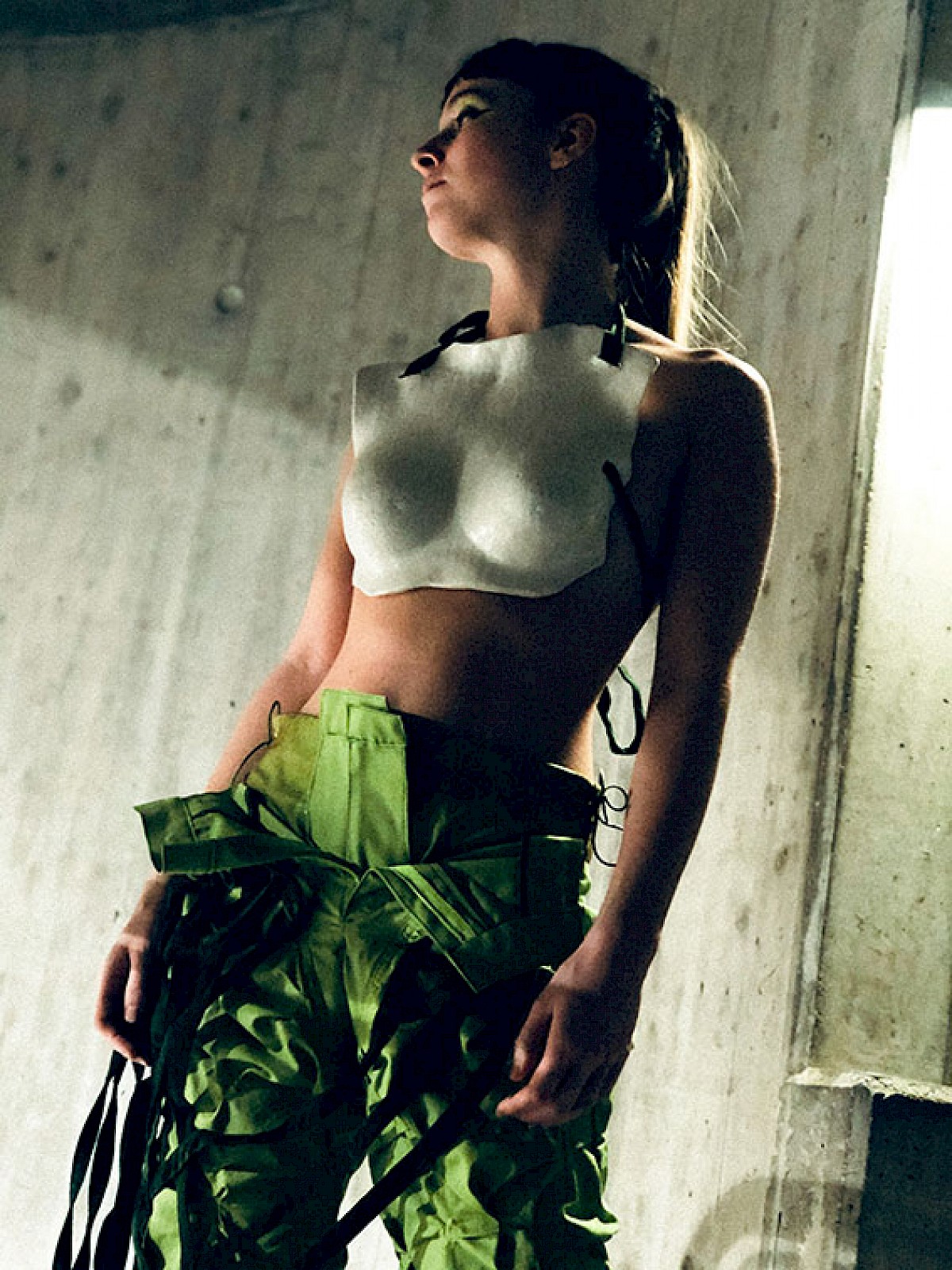
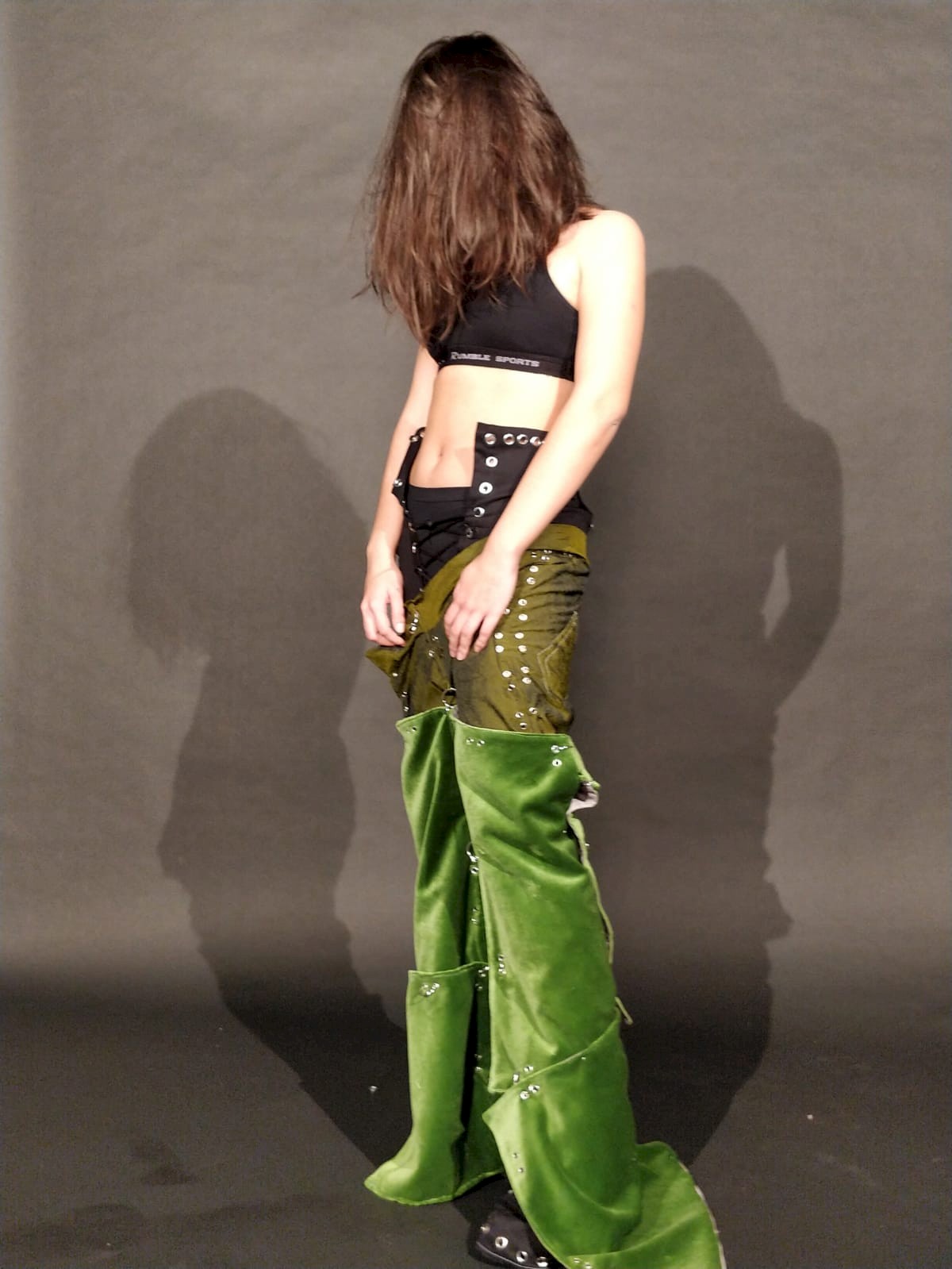
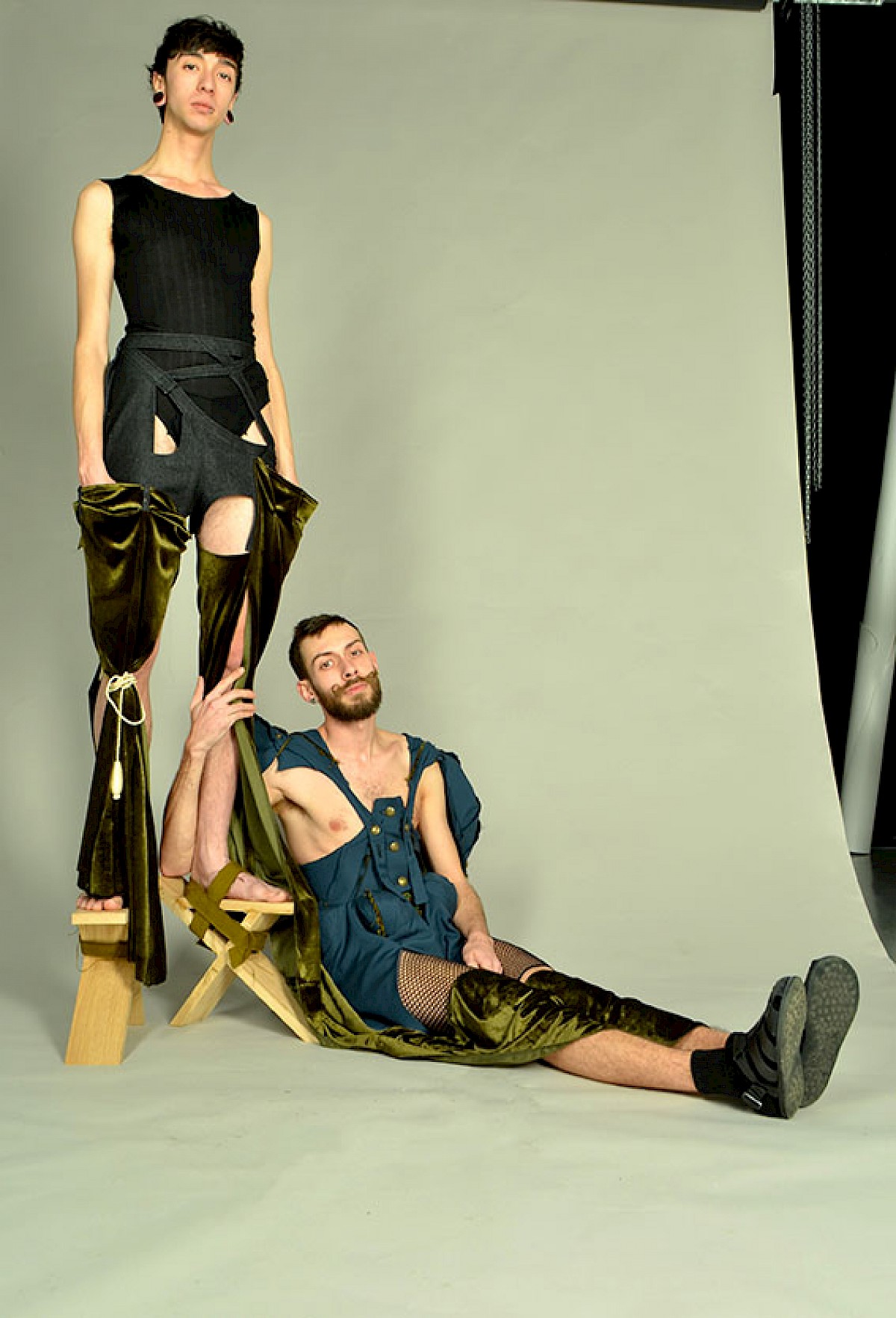
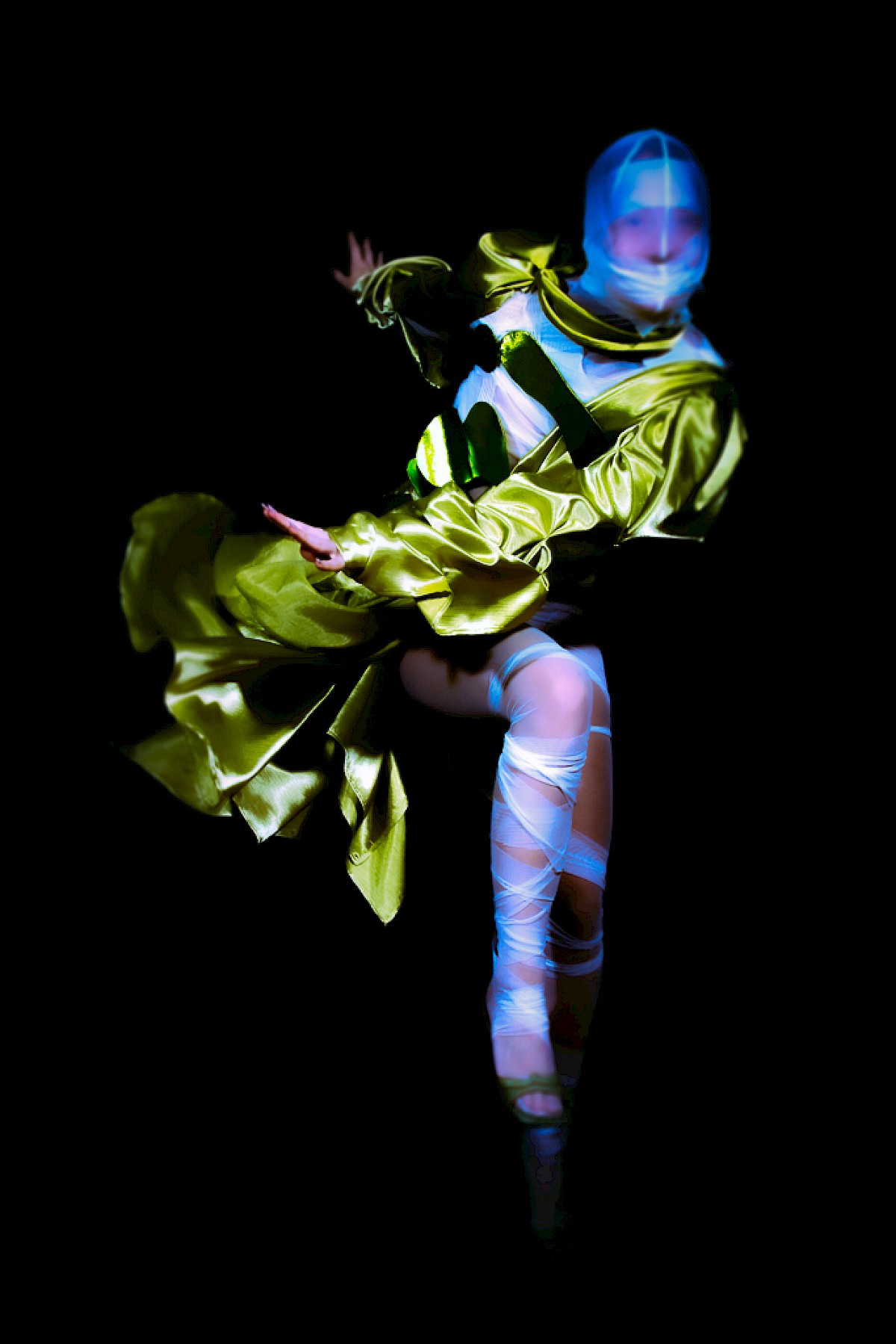
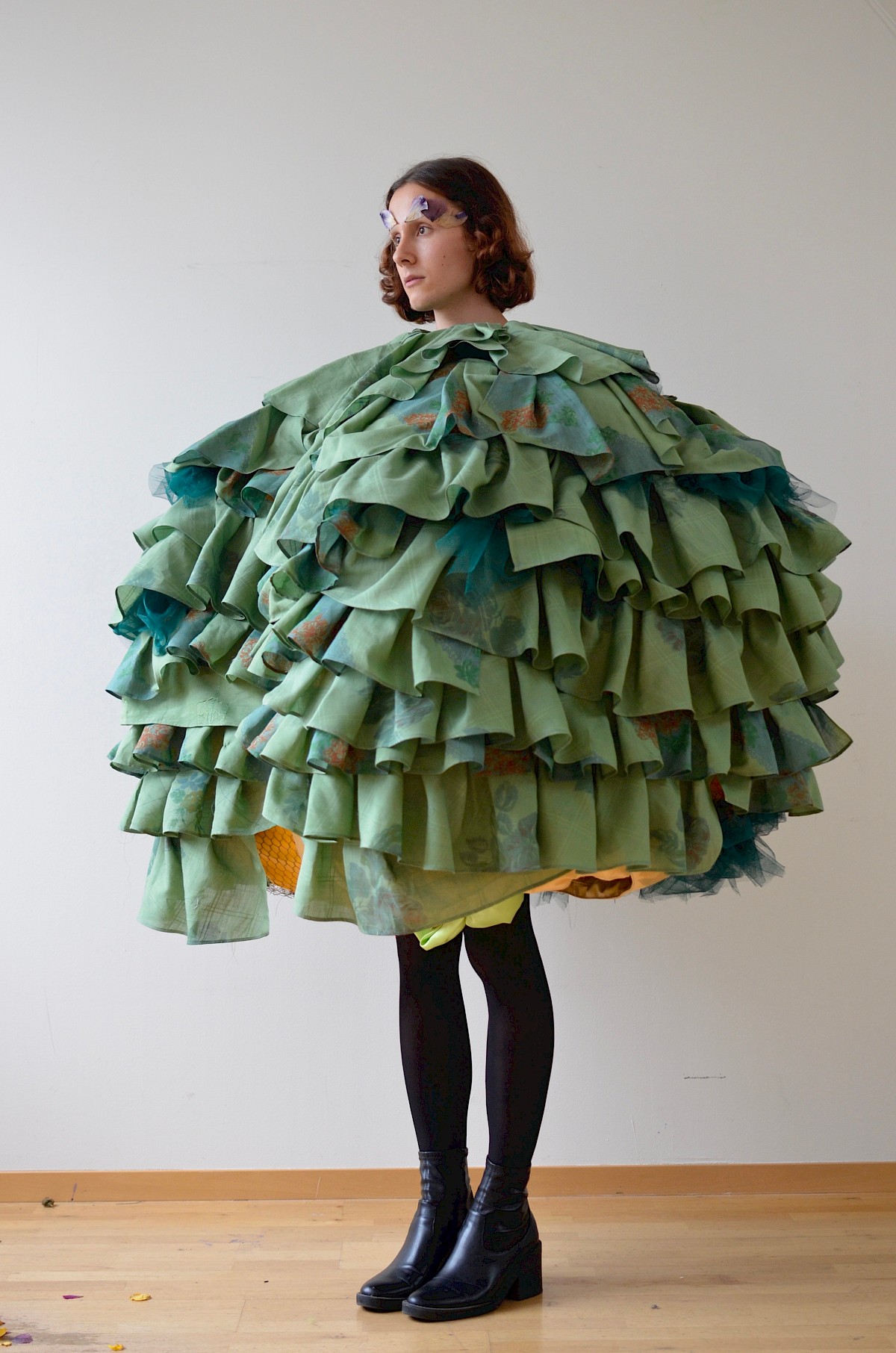
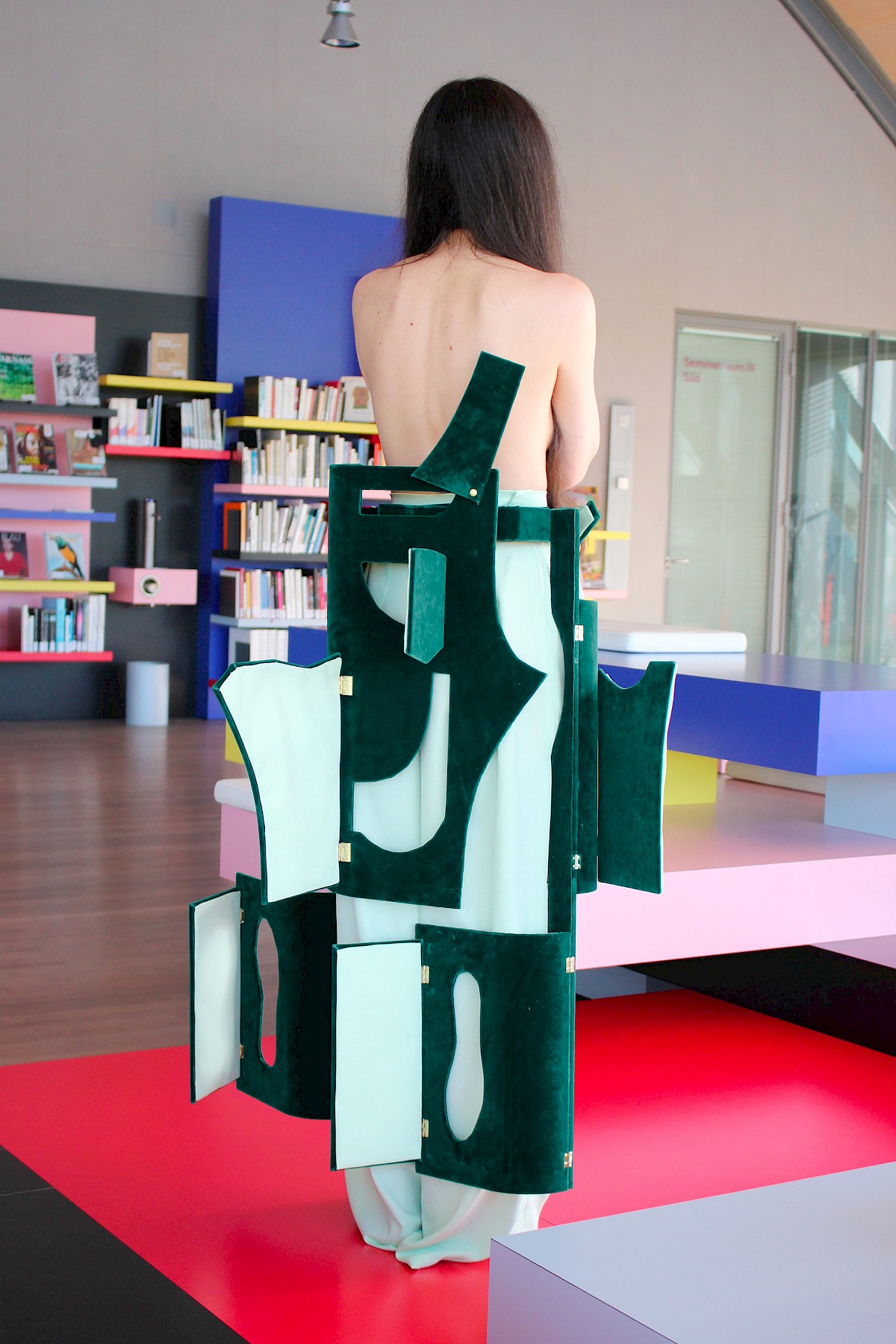
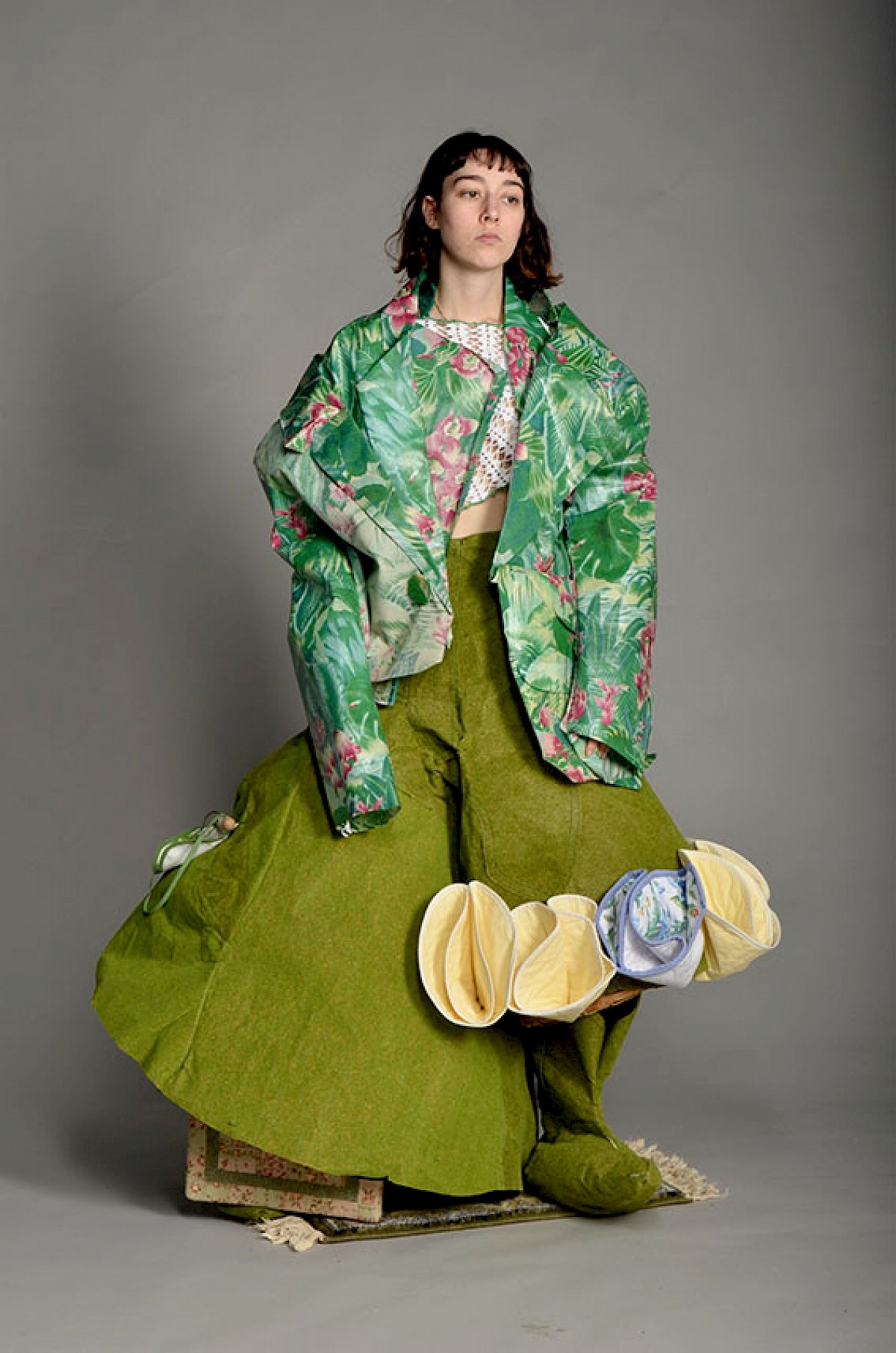
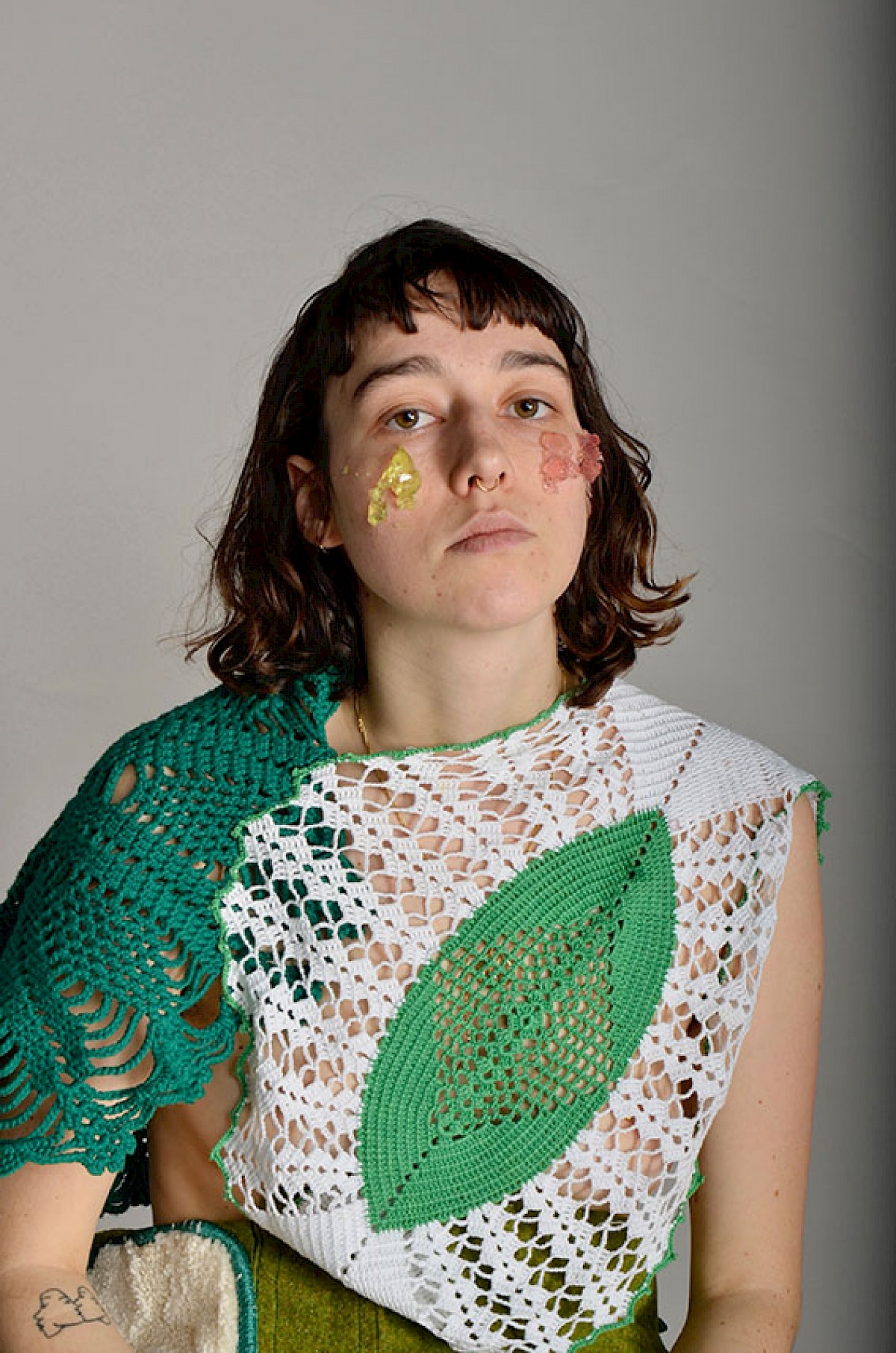
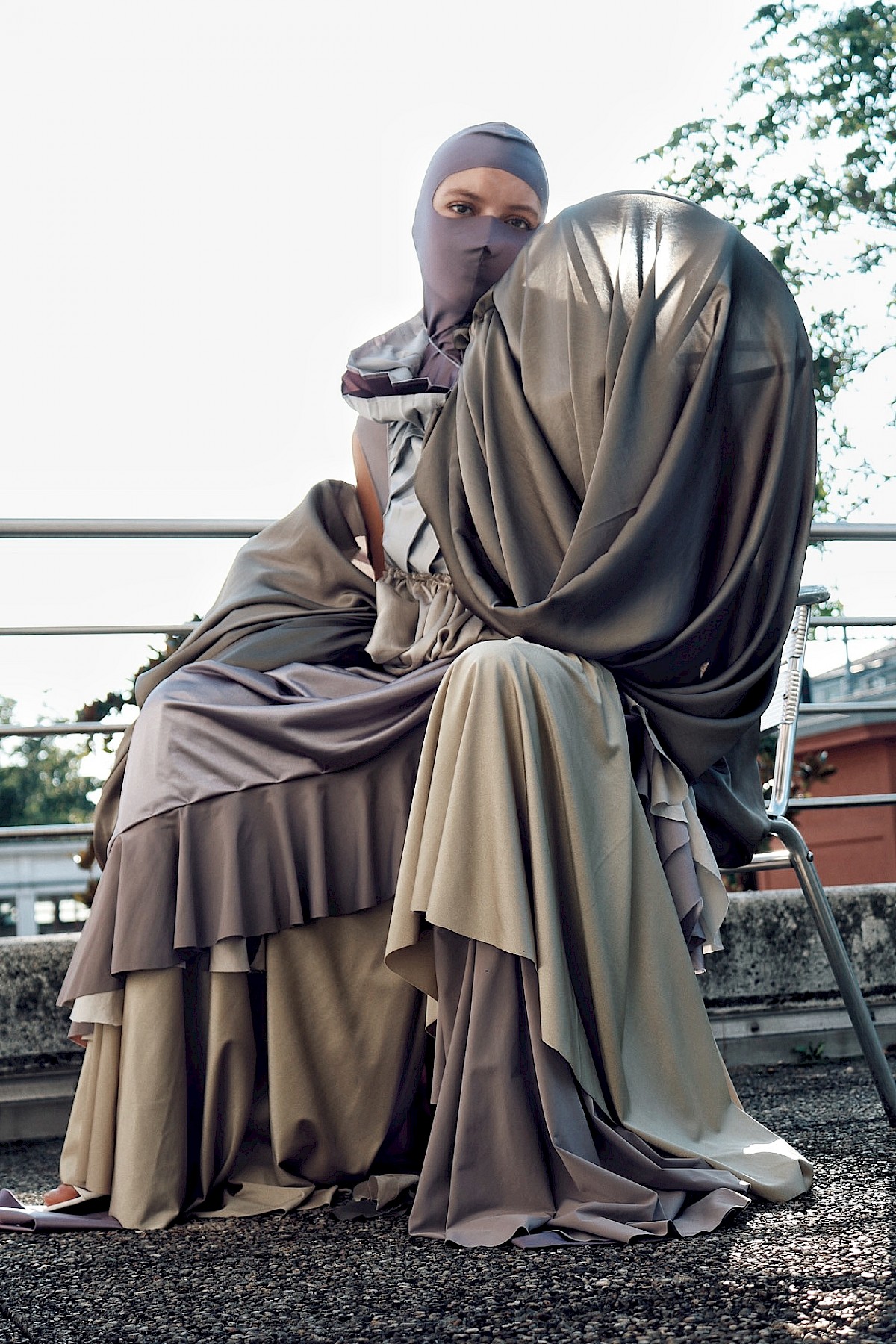
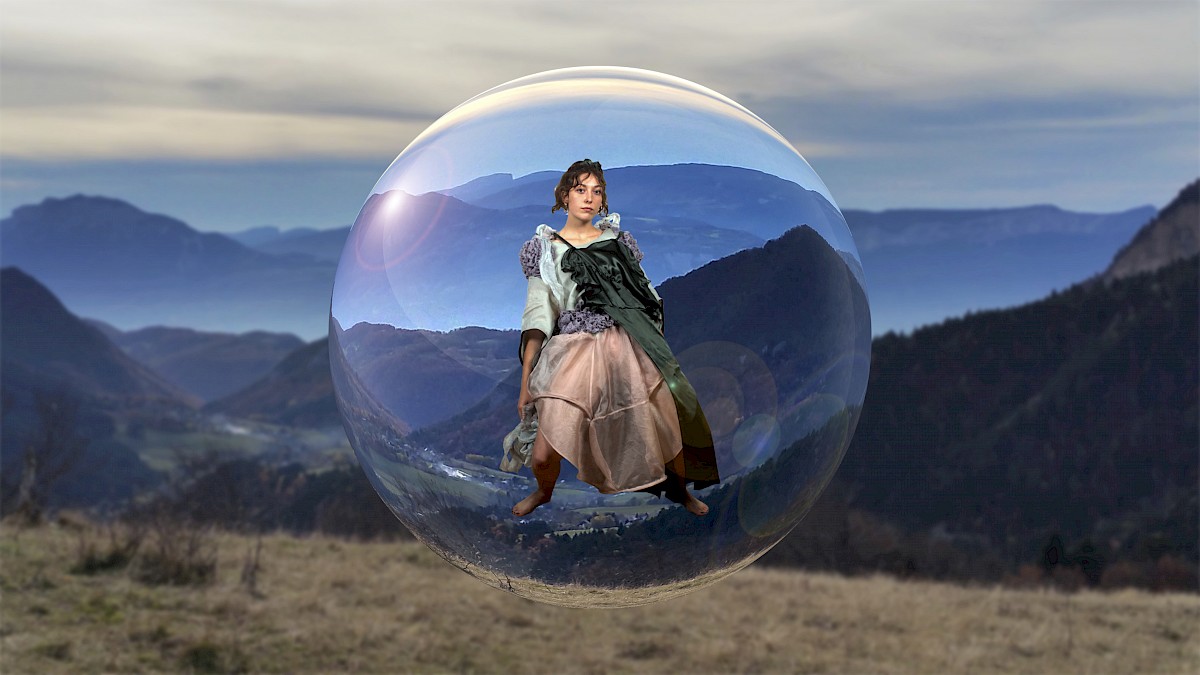
Utilisant le manifeste rédigé collectivement en début d’année, les étudiant·e·x·s ont réinterprété des archétypes vestimentaires : le veston, le jean ou encore la robe de soirée.
Using the manifesto written collectively, students reinterpreted clothing archetypes: the tailored jacket, denim jeans, the evening dress.
semestre 4
Dans le cadre d’un workshop supervisé par l’artiste Christopher Füllemann, la classe a travaillé à la construction d’une identité de groupe par le biais d’une performance et la création d’une collection d’accessoires. Christopher Füllemann et la designer Emilie Meldem, responsable pédagogique BA et tutrice du BA2, reviennent dans la conversation qui suit sur le workshop et l’impact du confinement.
In a workshop with artist Christopher Füllemann, the class worked on building a group identity through a collective performance and a collection of accessories. In the following interview, Christopher Füllemann and designer Emilie Meldem, head of BA pedadogy and BA2 tutor, discuss the workshop and the impact of the confinement.
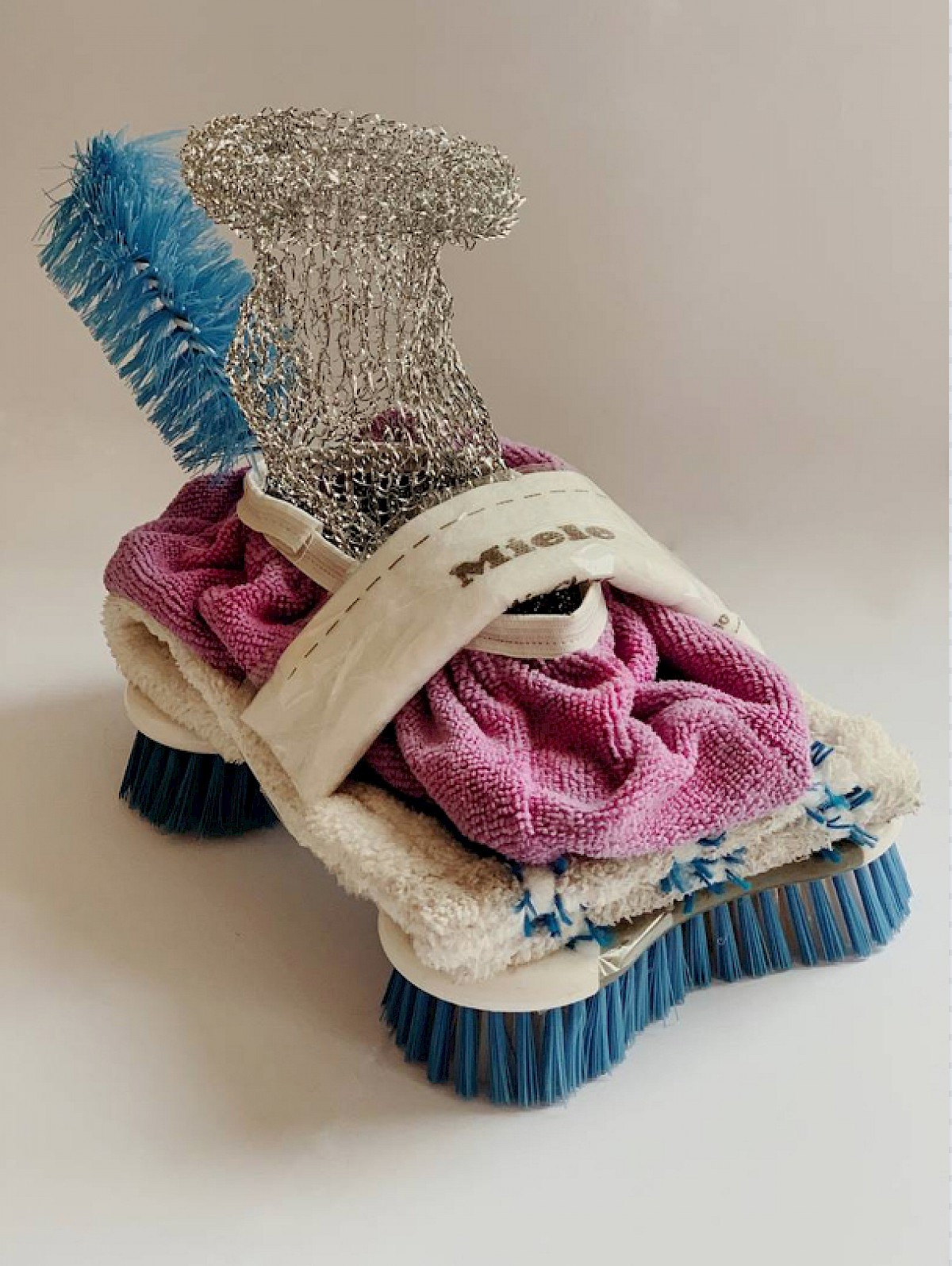
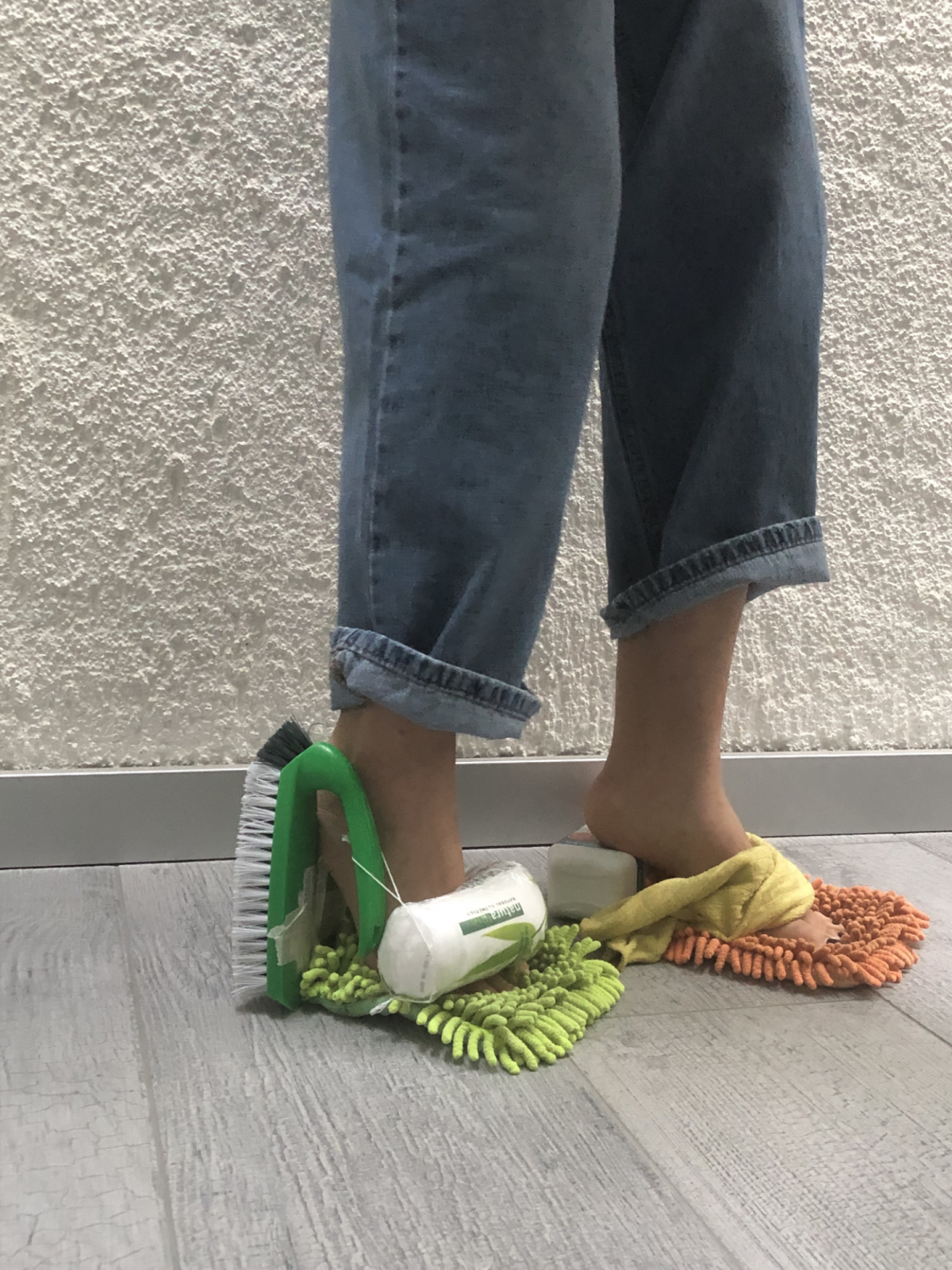
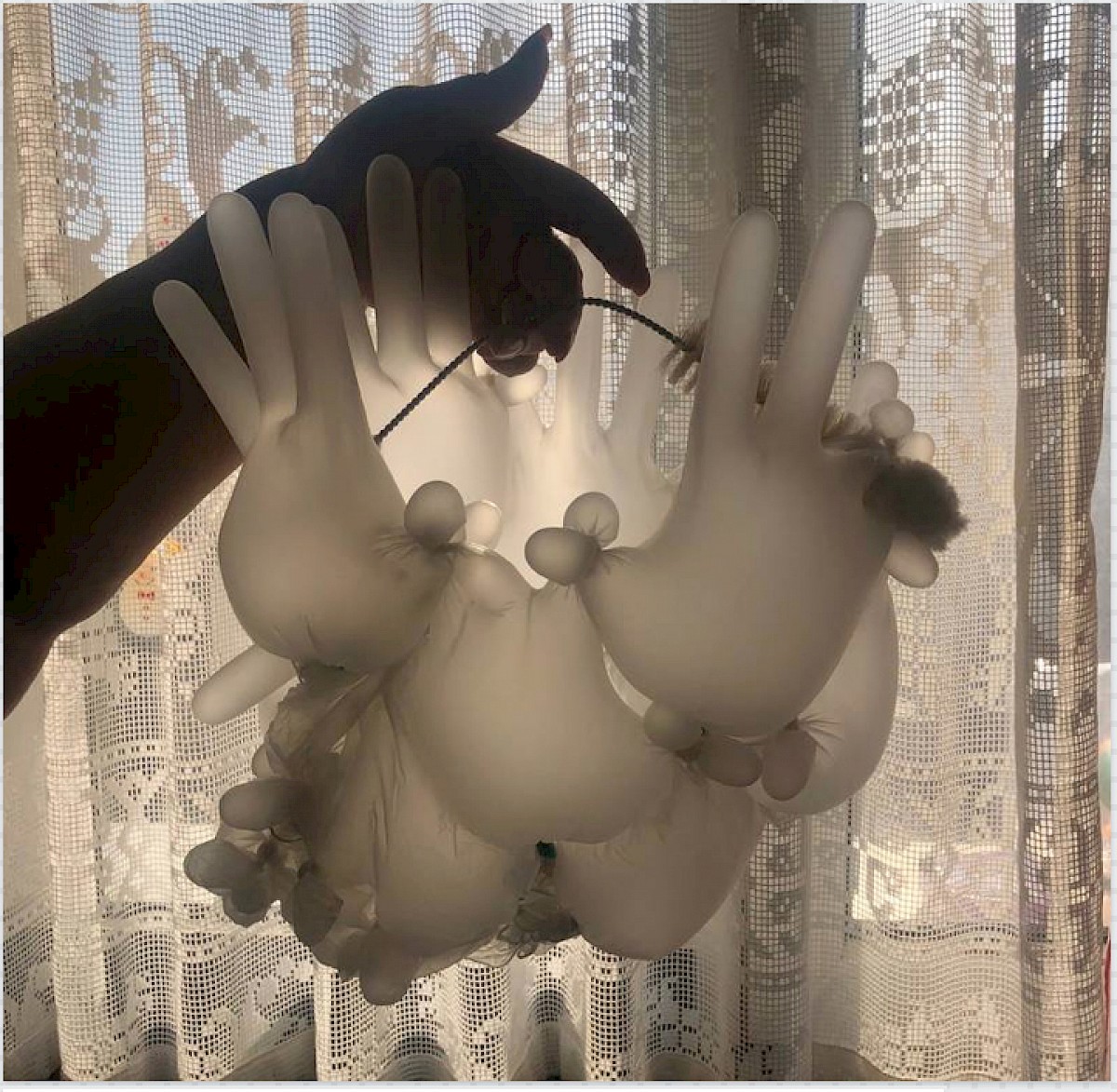
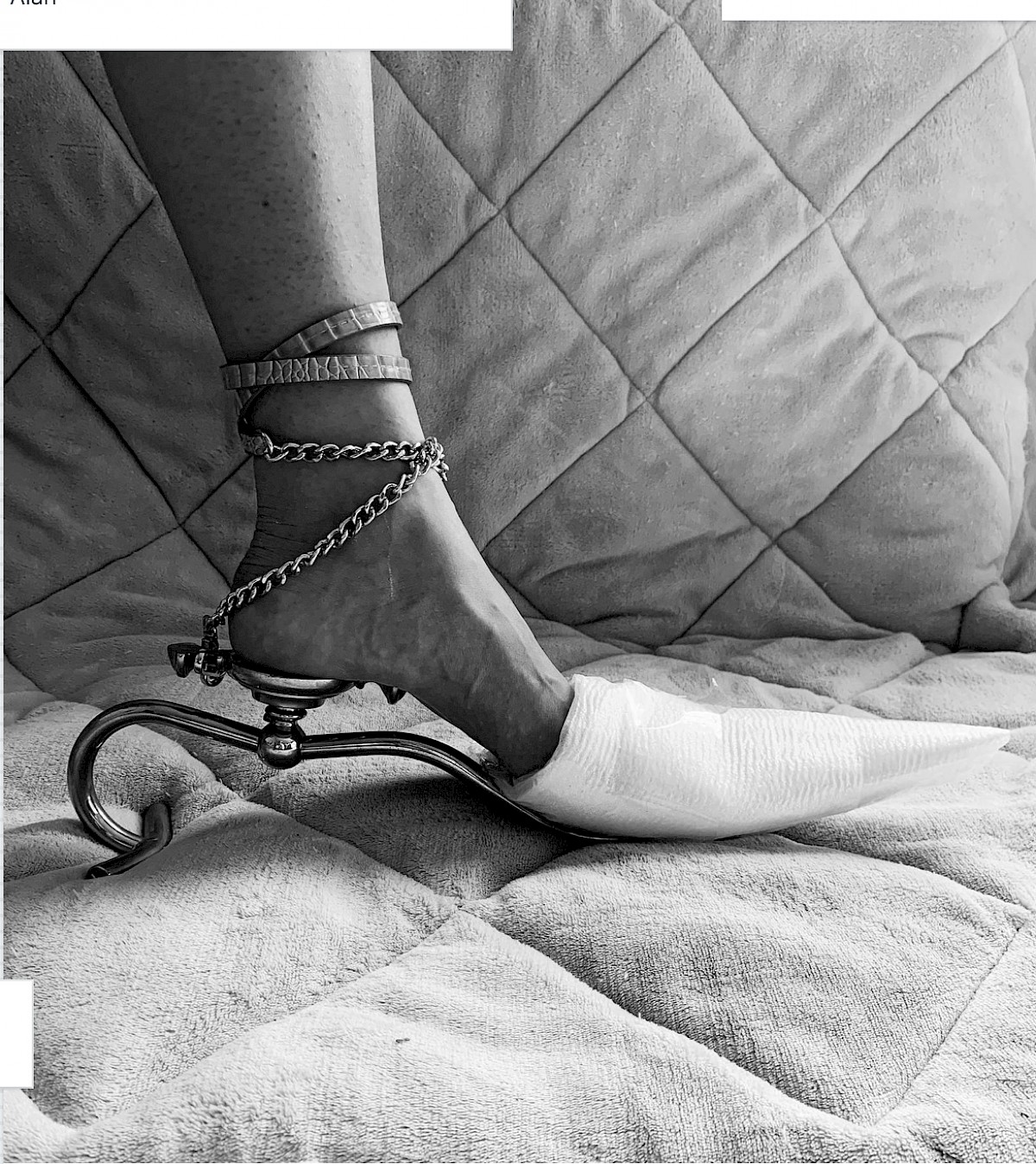
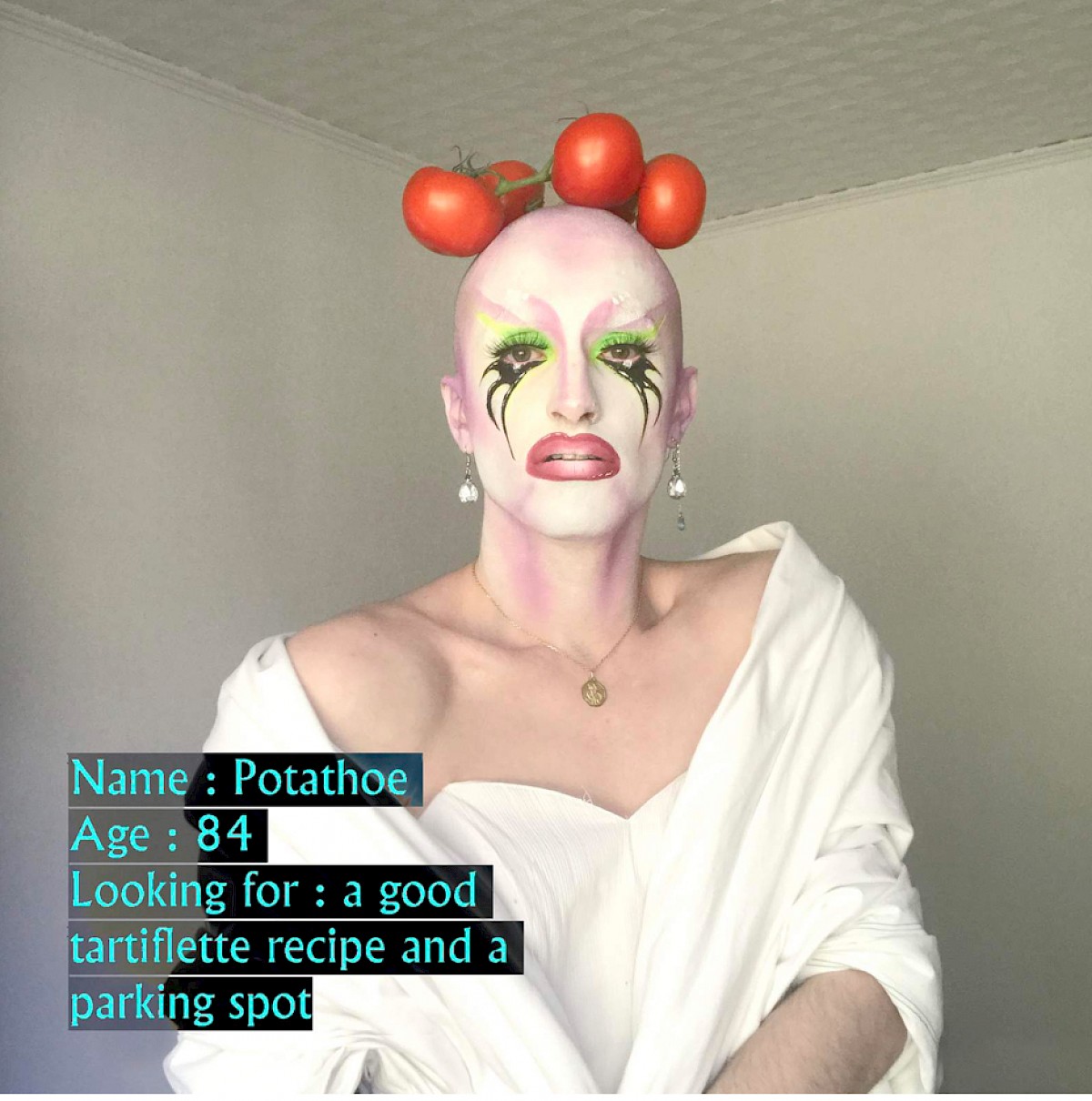
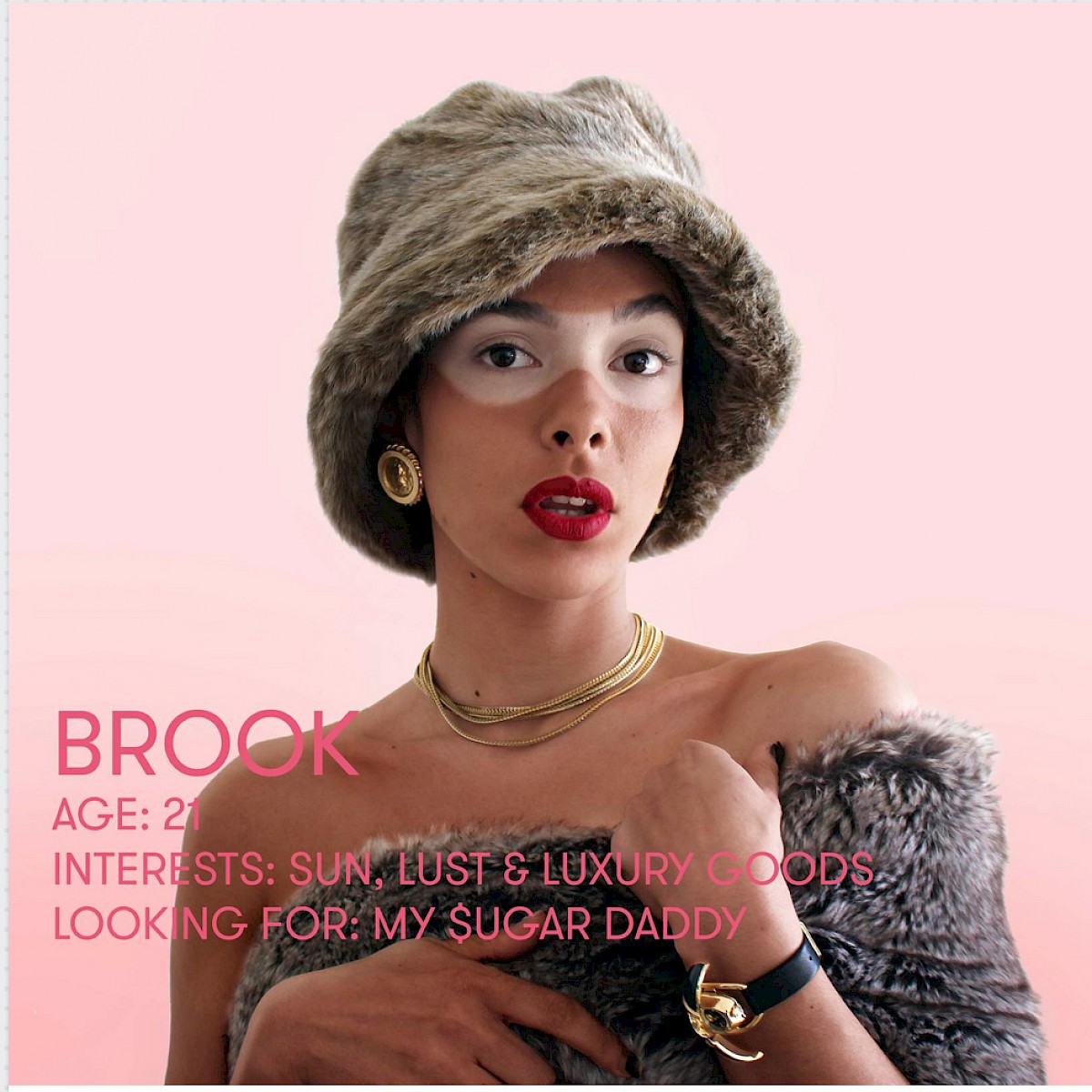
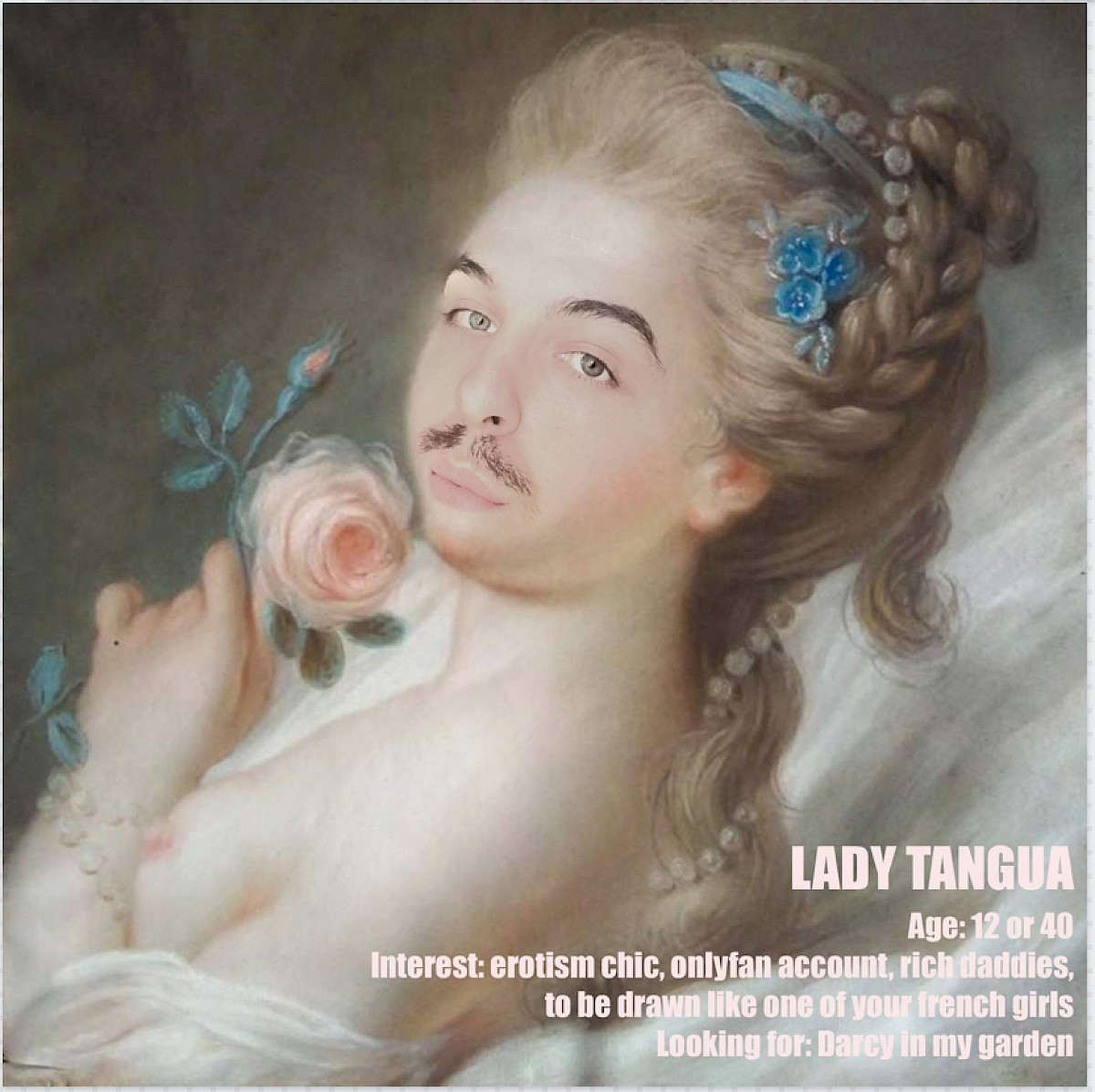
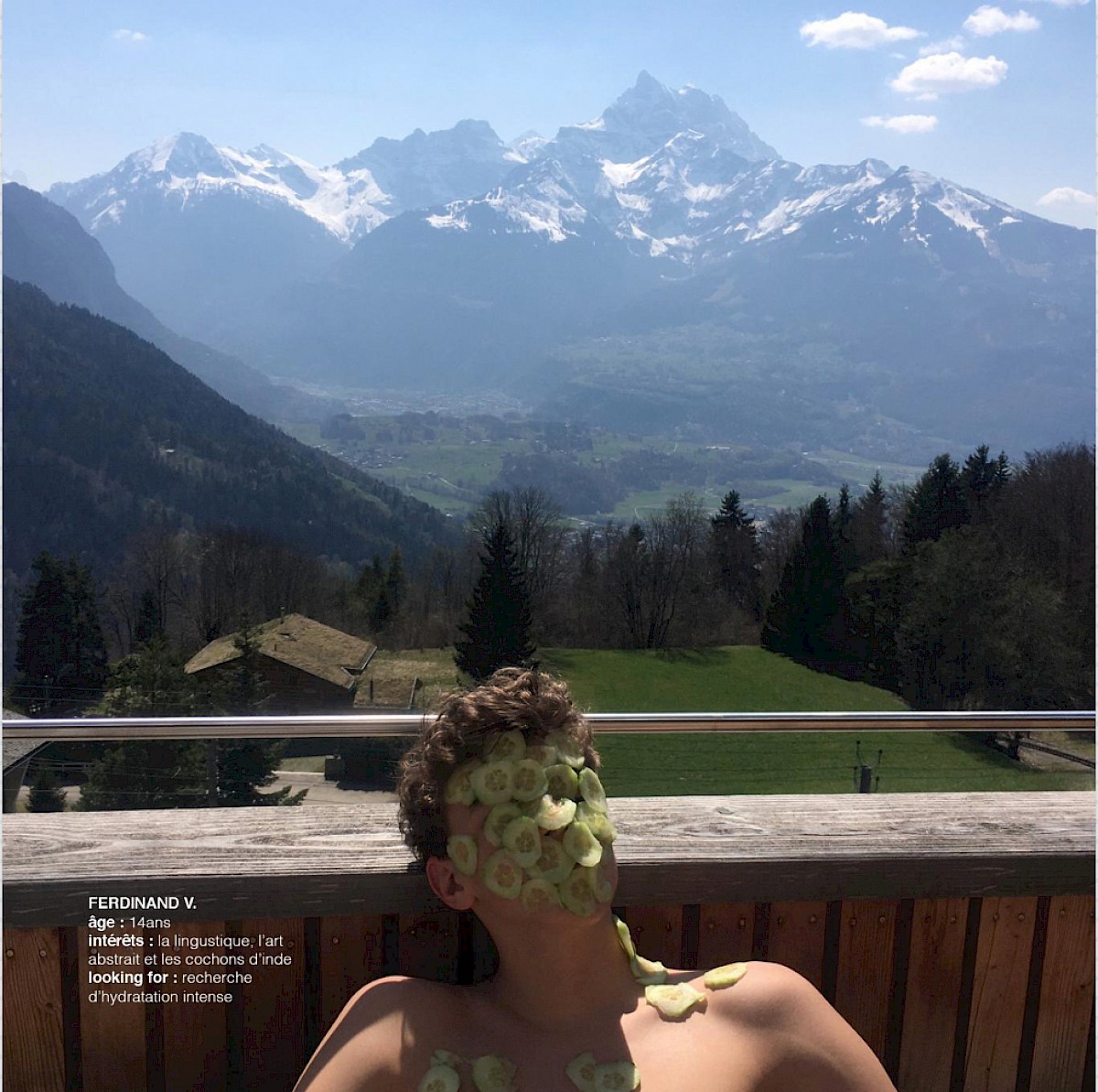
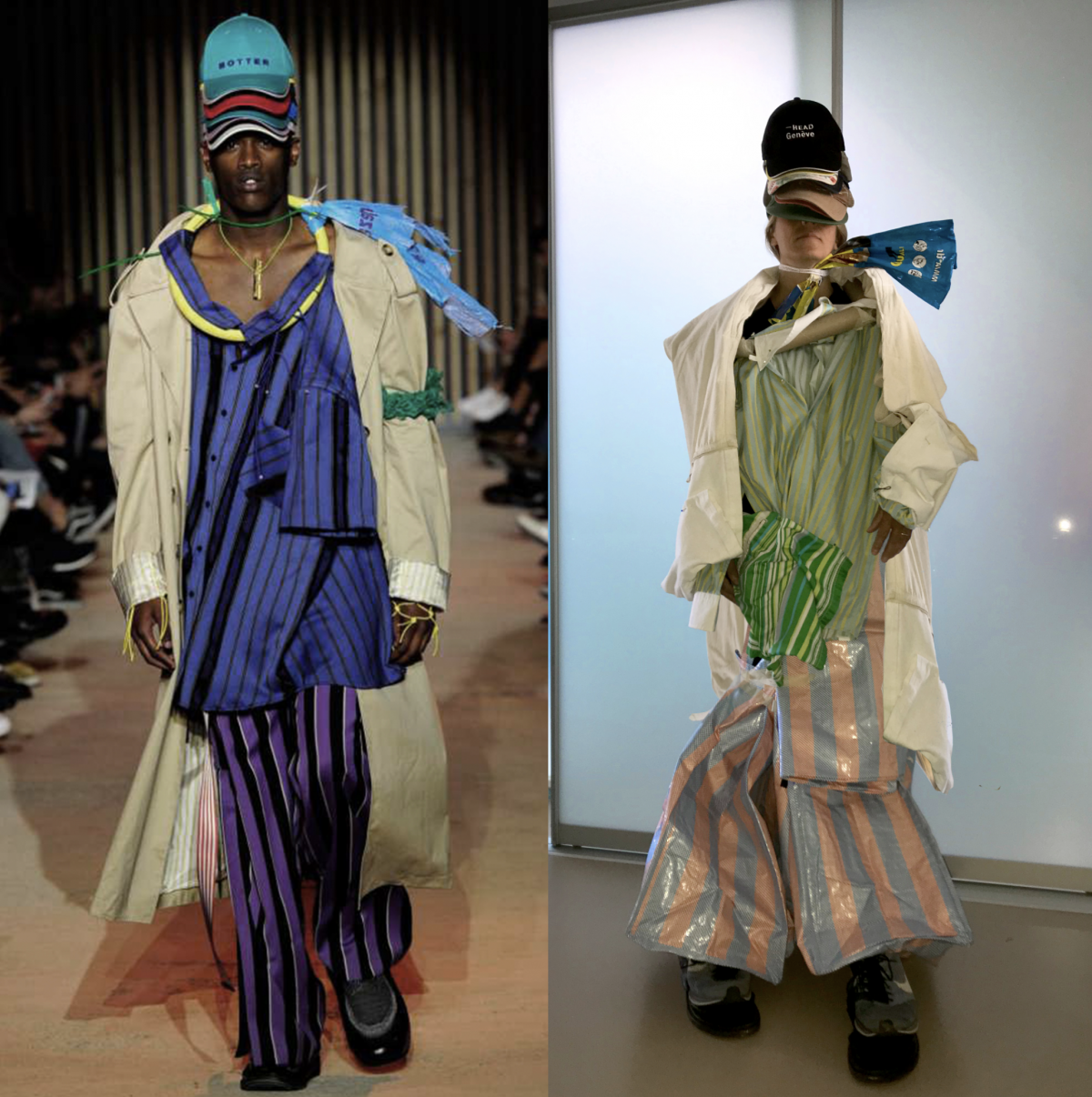
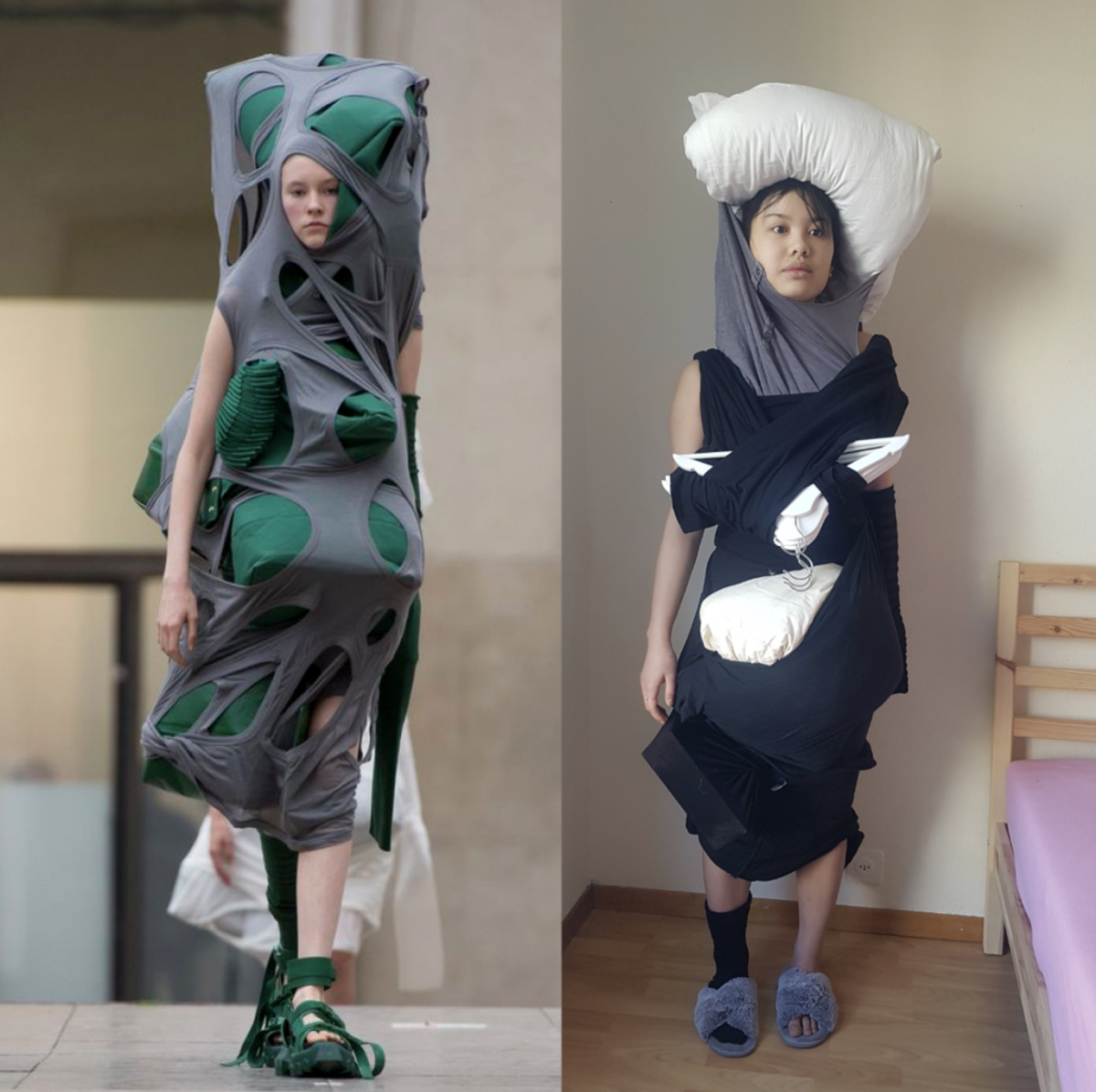
Durant le confinement, le manifeste a suscité une série de défis qui ont été relevés sur la page Instagram de la classe, @coolheadstudents. Il s’agissait de fabriquer des mèmes ou de concevoir des looks et des accessoires avec des objets domestiques.
During the confinement, the manifesto sparked a series of challenges that were carried out on the class’s Instagram page, @coolheadstudents. It involved meme-making and devising looks and accessories with objects found around the house.
En raison de la pandémie, Valentine Ebner, en charge du workshop maille, a, elle aussi, dû revoir sa feuille de route. Son atelier s’est concentré sur le tricot fait main et un objet, désormais familier, le masque. Privé·e·x·s d’accès au matériel de l’école, les étudiant·e·x·s ont reçu un guide listant les objets disponibles en grande surface, aptes à remplacer fils et aiguilles. Pour mieux cerner les enjeux du masque, la classe a mené des entretiens avec des personnalités de l’art et de la mode. Les travaux du semestre ont finalement pu sortir de l’ombre à l’occasion d’un « vernissage » public, ponctué des performances virtuelles des étudiant·e·x·s et hébergé sur un site conçu pour l’occasion avec le collectif de design genevois The Trojans.
The semester’s atelier closed with the knit workshop supervised by Valentine Ebner. Taking into account student’s limited access to material, it focused on hand-knitting and an object we all become more acquainted with of late — masks. Valentine provided students with a comprehensive list of things that could be bought in supermarkets and used instead of knitting needles and yarn. Going beyond facemasks, students engaged with the symbolism of masks across history and cultures by hosting conversations with dress and art historians. Bringing together the manifesto and the knitted masks, their final presentation was staged as an online public “opening” and punctuated with performances. The website on which it was hosted was built with the help of Geneva-based design collective The Trojans.
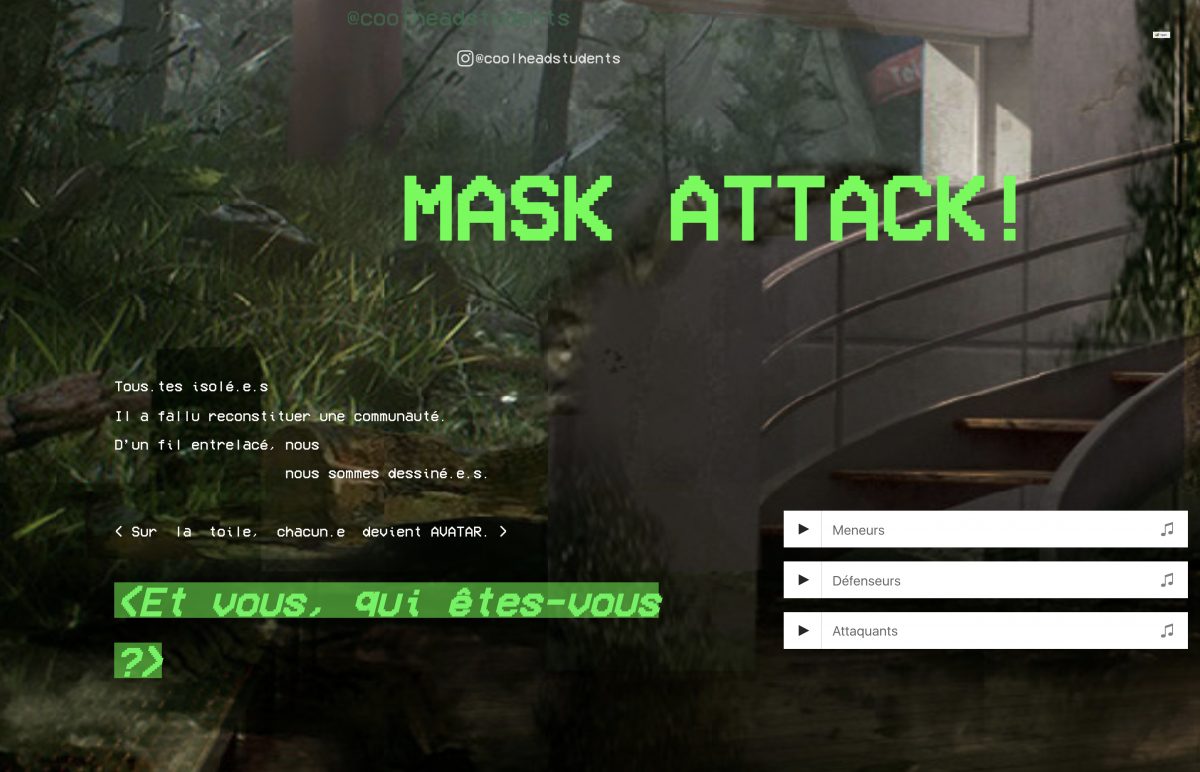
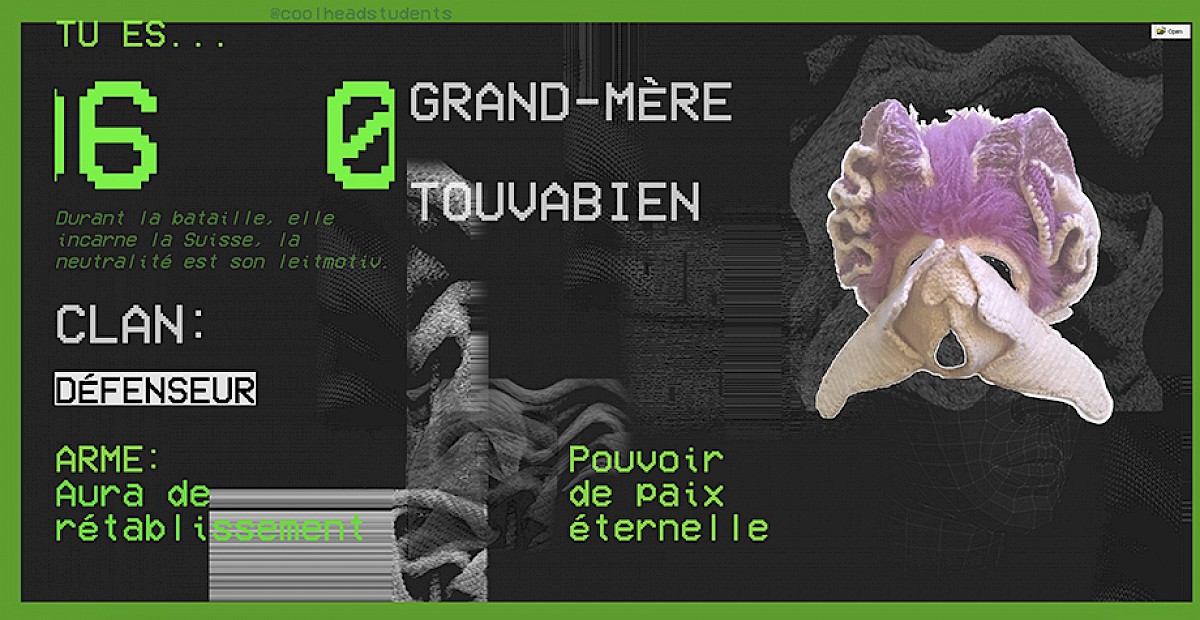
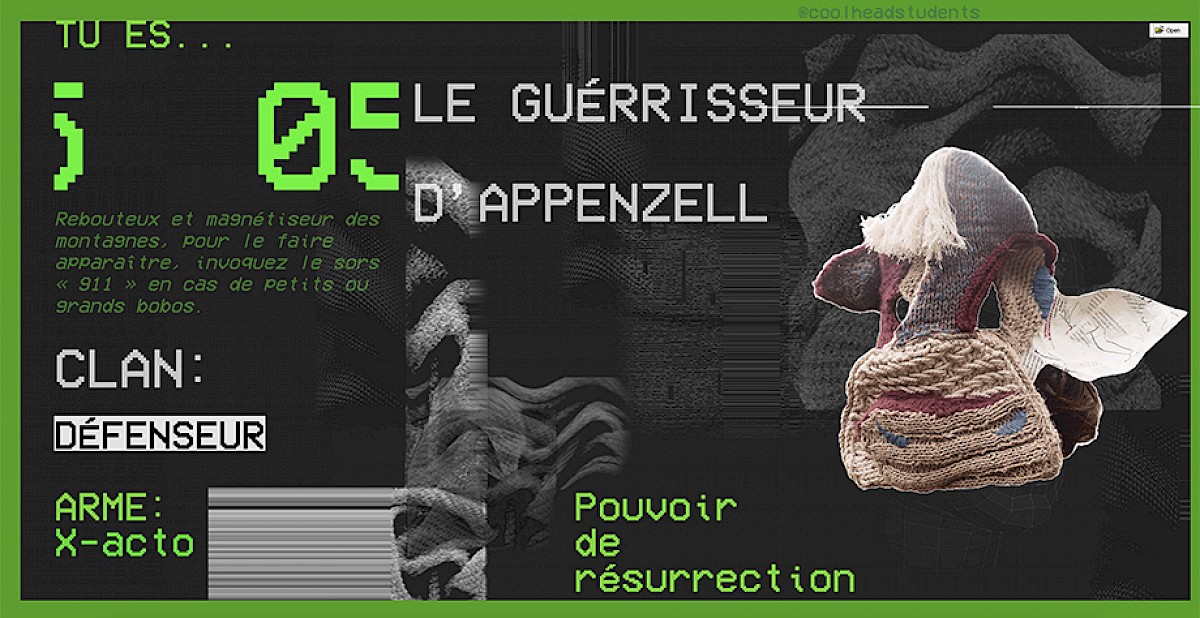
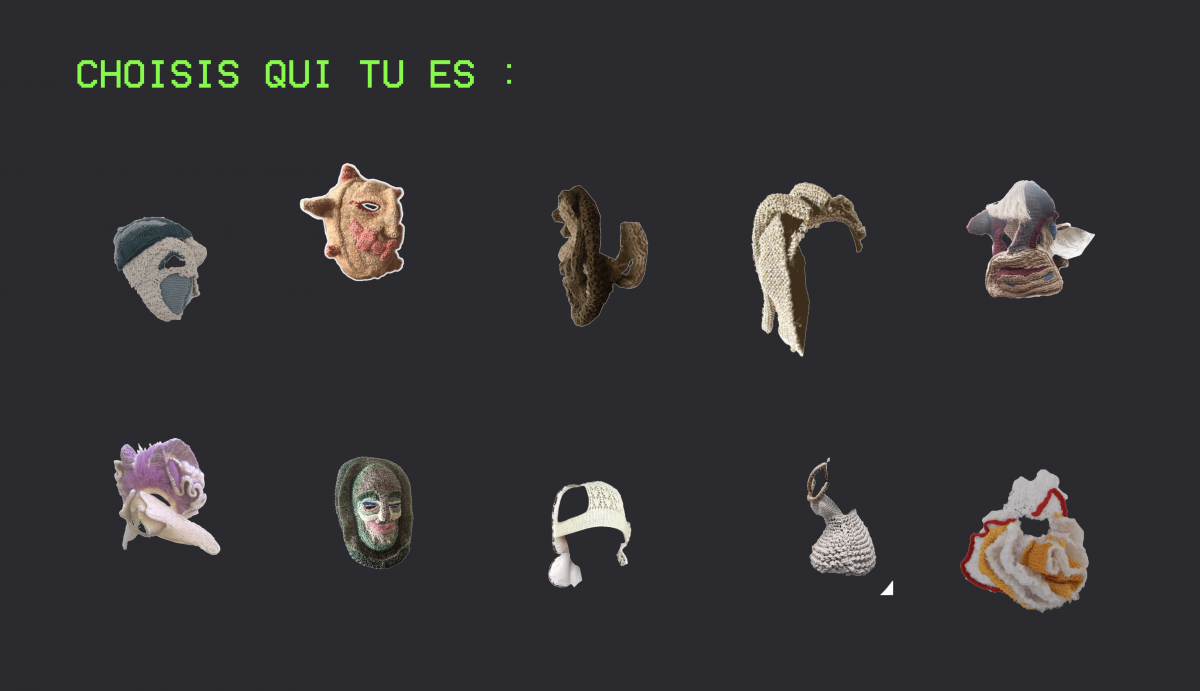
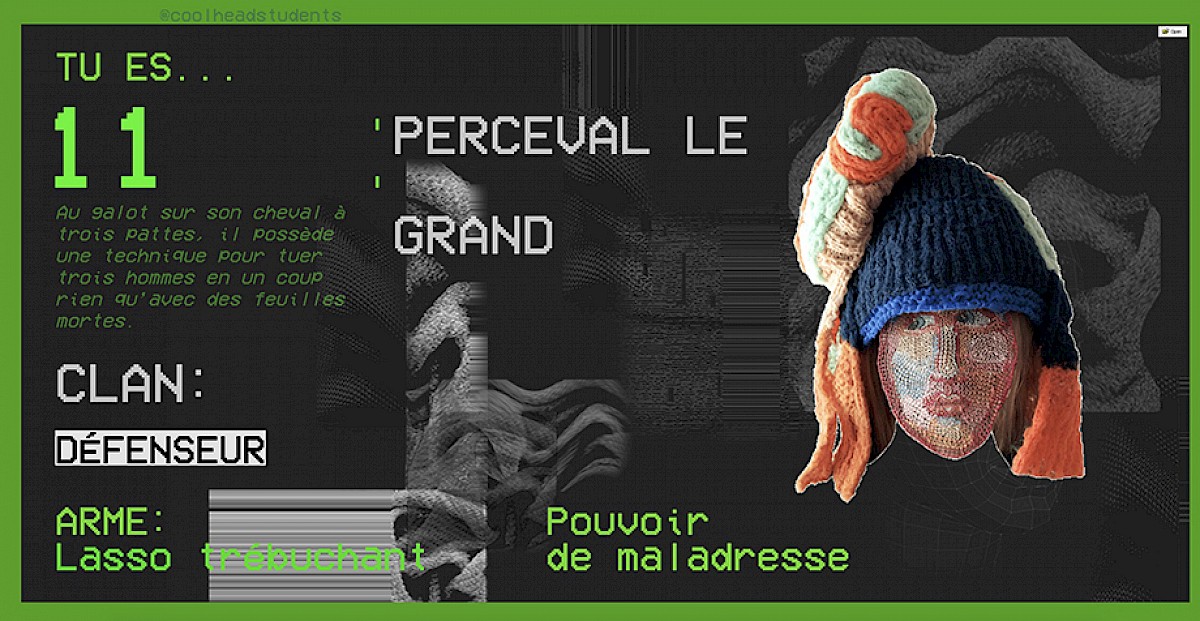
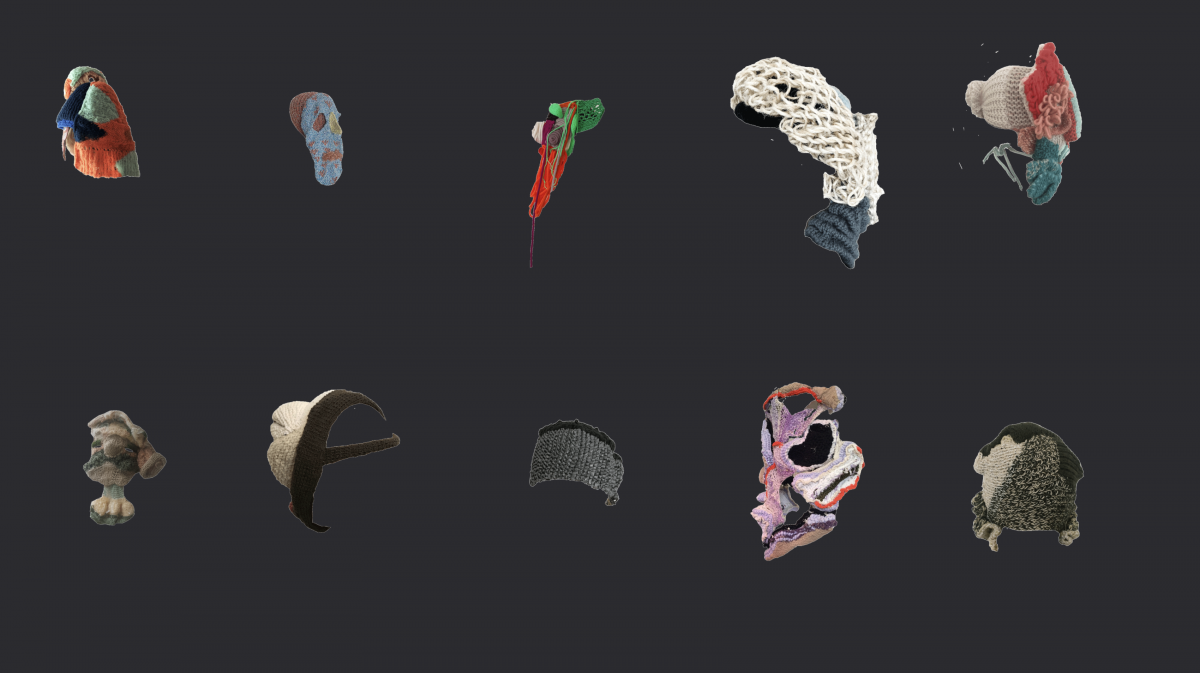
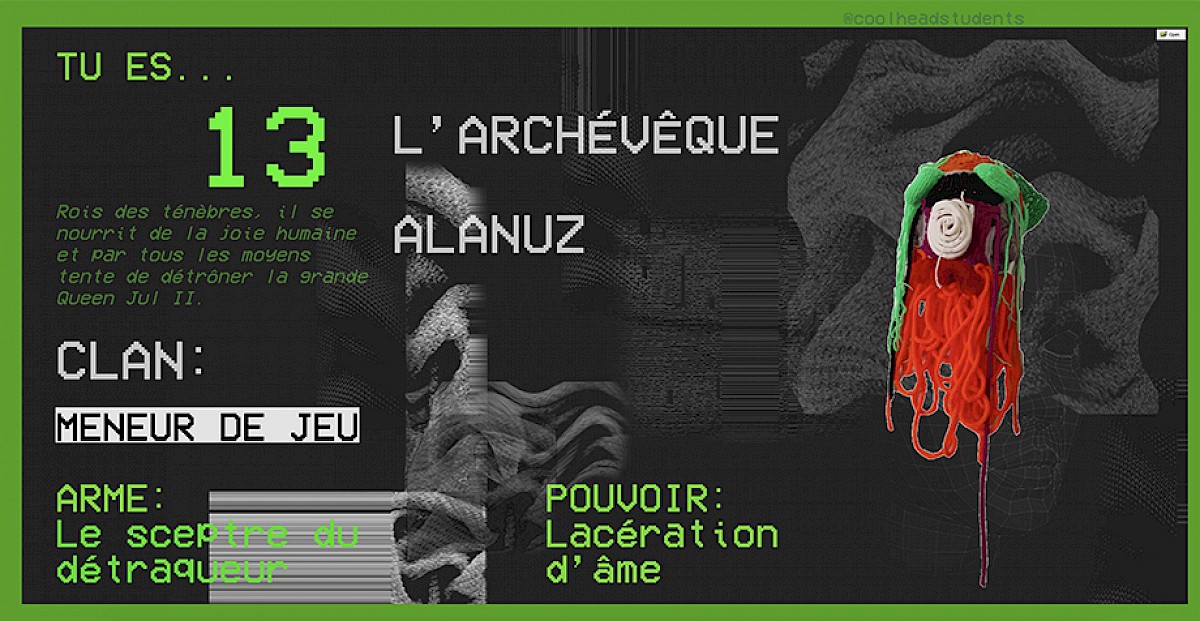
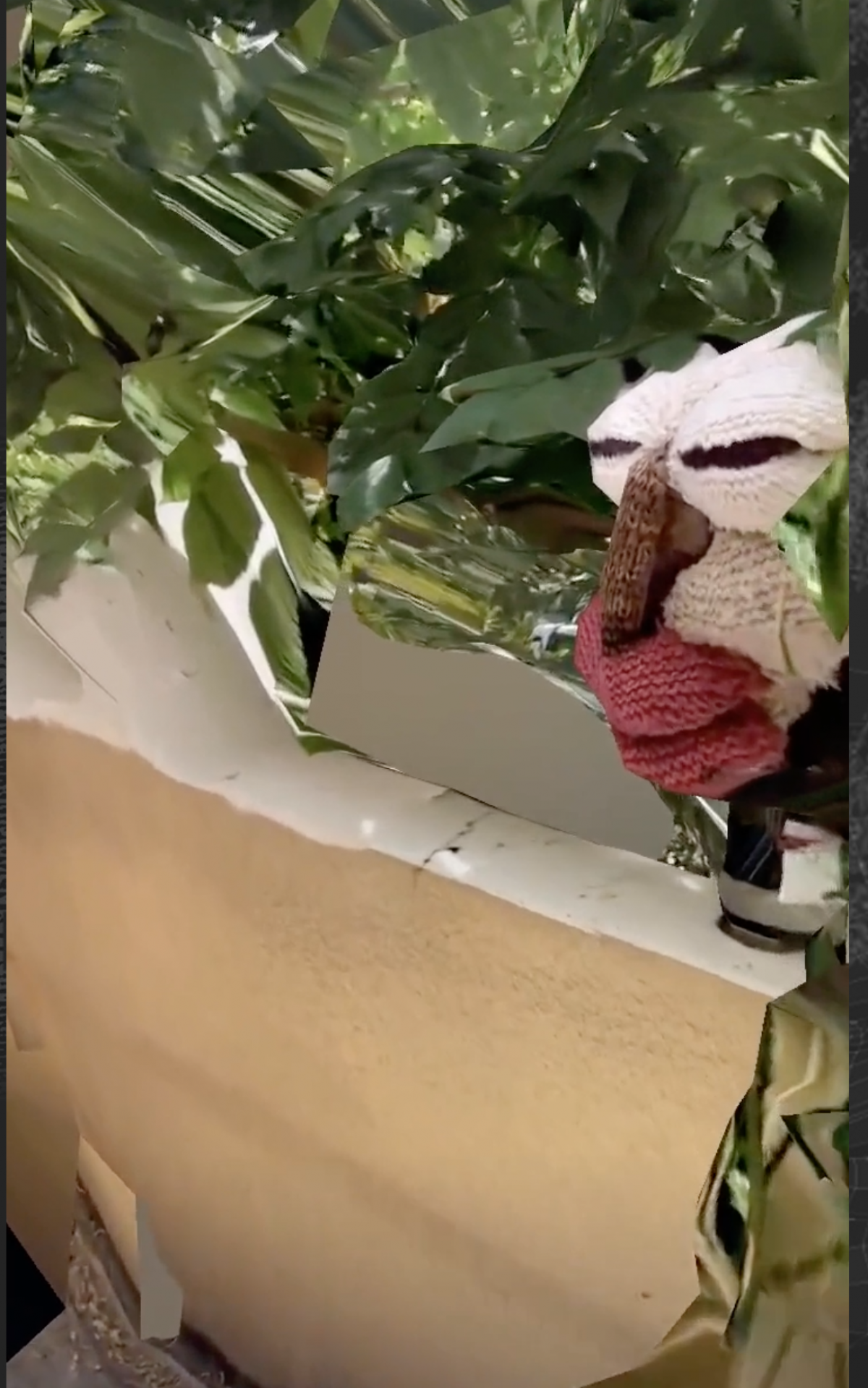
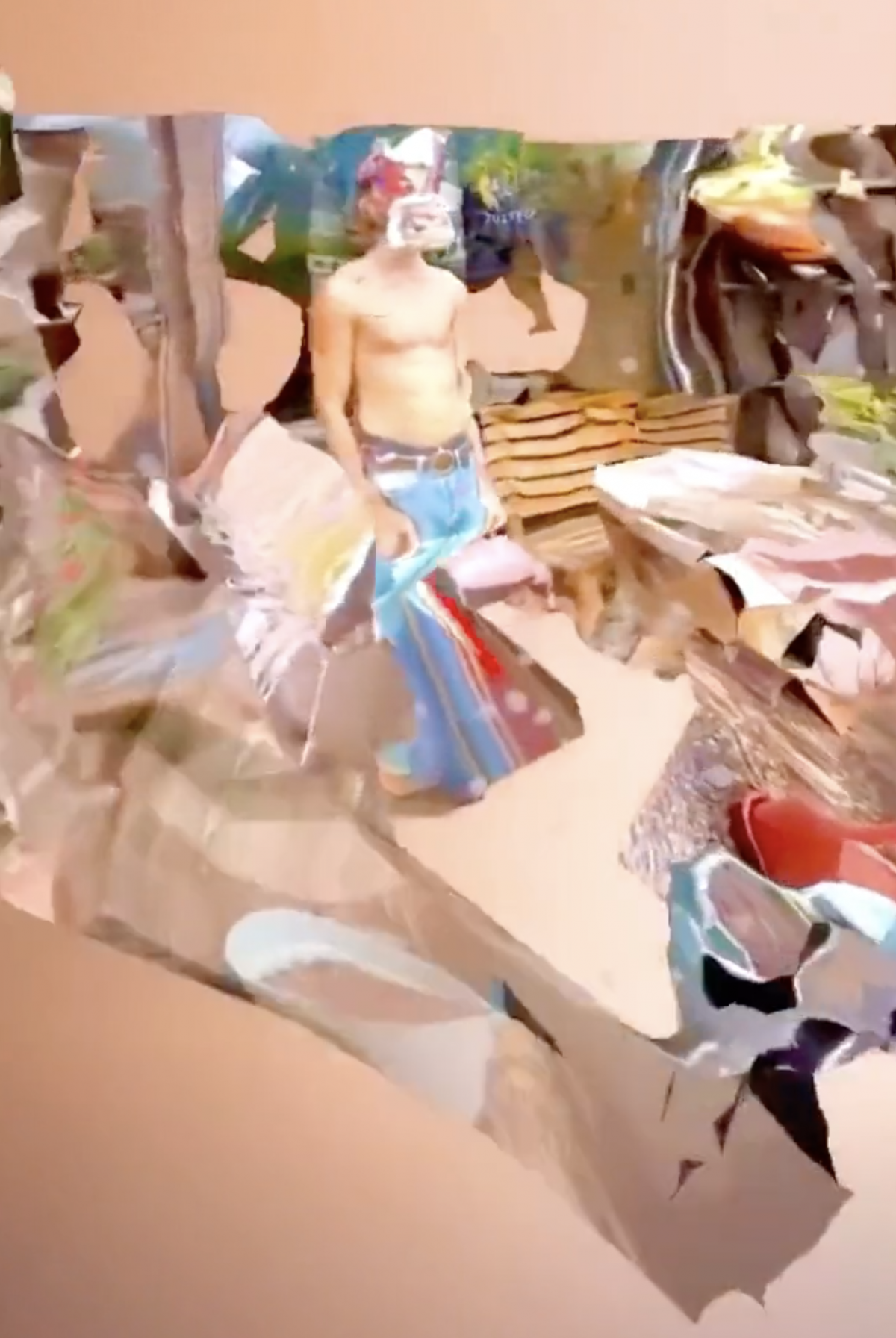
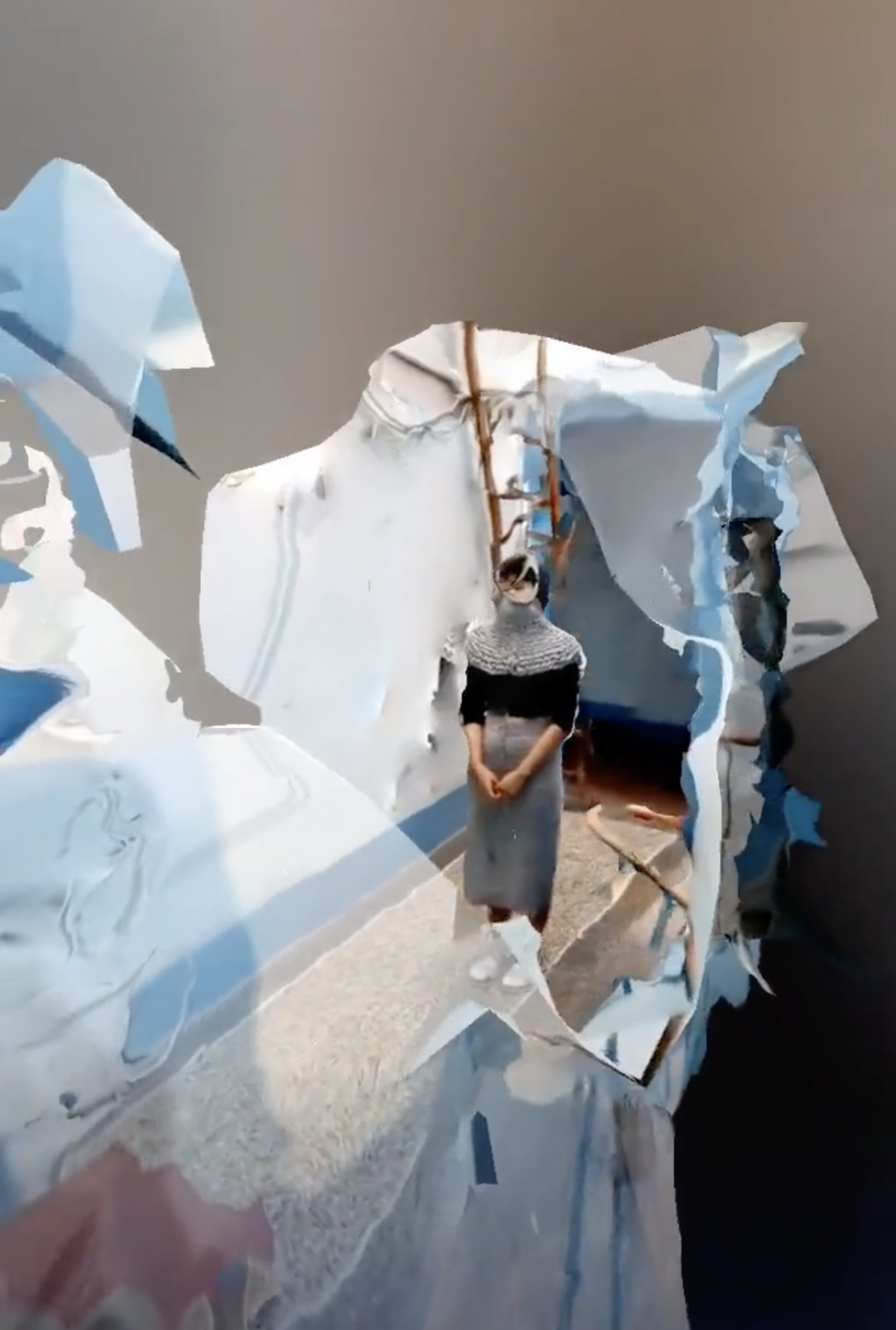
Mise en scène virtuelle de l’atelier maille, Mask Attack!
Online presentation of the knit workshop, Mask Attack!
Knit workshop, Ines Migeon.
Knit workshop, Ines Migeon.
Enfin, privé·e·x·s des stages qui clôturent habituellement le semestre, les étudiant·e·x·s ont été sensibilisé·e·x·s par Jasmina Barshovi, adjointe scientifique du département, à la structure et au fonctionnement de l’industrie. Le contexte particulier, celui d’un glissement vers l’enseignement à distance, lui a permis d’insister sur l’importance du bien-être personnel et de la séparation entre sphères professionnelle et privée.
conférence confinement
Dans le cadre d’une série de conférences, la classe a cherché à se faire une idée de l’état de l’industrie. Elle a interpellé Glenn Martens, directeur artistique de Y/Project, sur la manière dont la crise affectait son studio, la collection à venir et l’industrie dans son ensemble. Elle s’est également entretenue avec la designer Christine Rösch et l’artiste Nils Amadeus Lange de l’Institut de la mode de Bâle au sujet de l’avenir du défilé.
Finally, students were given an overview of the industry’s structure and workings by Jasmina Barshovi, the department’s scientific deputy, to make up for the placements that usually take place in their second year. She also talked to students about self-care and the importance of separating work from private life as the department transitioned to virtual teaching.
conference confinement
As part of a series of talks, the class reached out to enquire about the state of fashion. It called in on Y-Project’s Glenn Martens to share how the crisis was affecting his studio, his upcoming collection, and the fashion industry as a whole. It spoke to Basel Fashion Institute’s Christine Rösch and Nils Amadeus Lange about the future of fashion shows.
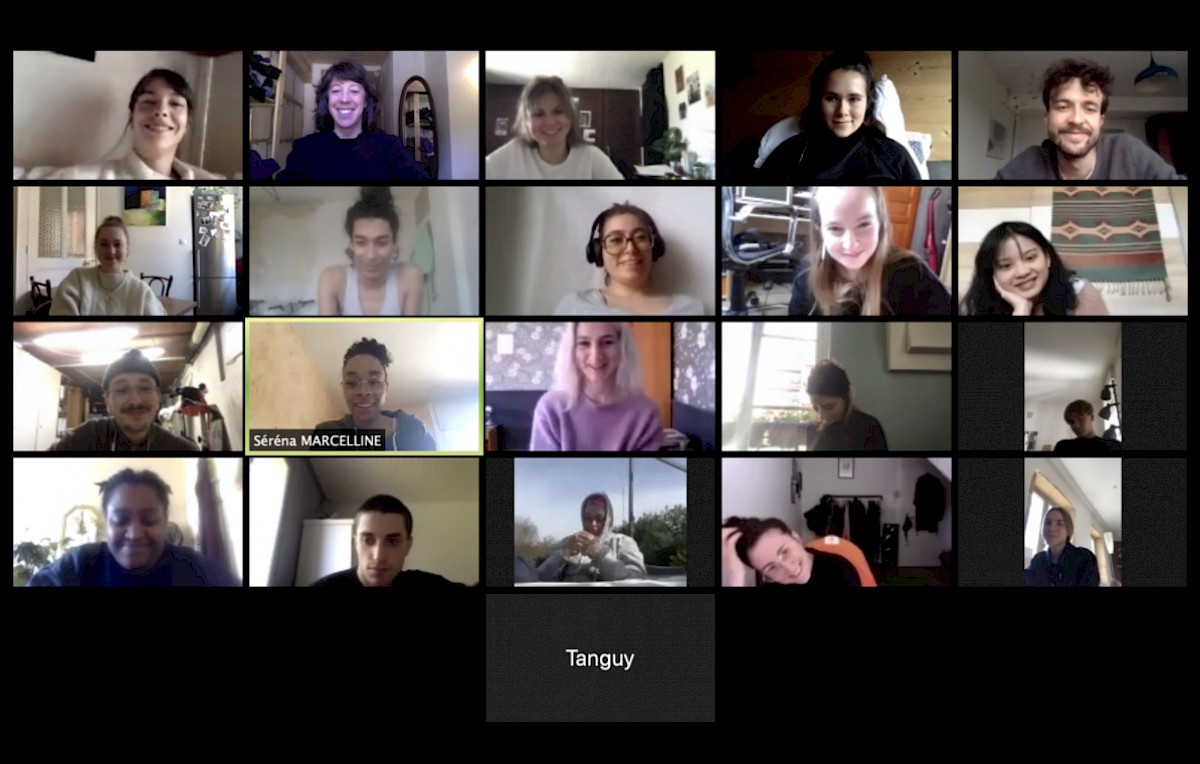
conference confinement
conference confinement
technique
Laurence Imstepf et Tineke van der Meer ont assuré un soutien technique tout au long de la crise. La designer Sabine Schechinger a introduit les étudiant·e·x·s aux outils numériques du design et à la réalisation de fiches techniques. Les compétences techniques ont été toutefois difficiles à transmettre par le biais de l’écran. La nouvelle année académique a donc débuté avec un workshop de trois semaines consacré à la réalisation des pièces pensées durant le confinement. Il a pris fin avec un défilé de mode organisé dans la cour de l’école à l’initiative de la classe.
In the atelier, technique was a key focus. Laurence Impstef and Tineke van der Meer provided support throughout the crisis. Sabine Schechinger introduced students to computer-aided design and technical sheets. Teaching technical skills through online classes had its limits, however. The new term opened with a three-week-long technical workshop, allowing students to complete their garments. It ended with an impromptu fashion show in the school’s courtyard.
Le défilé organisé par les BA2 pour présenter les silhouettes pensées durant le confinement.
The impromptu fashion show organised by BA2 students to present the silhouettes designed during the confinement.
conversation
Christopher Füllemann, intervenant
Emilie Meldem, responsable pédagogique BA, chargée de cours BA2
Aude Fellay, maître d’enseignement MA
AF Emilie, comment as-tu pensé le second semestre ? Et qu’est-ce qui a motivé ton choix de travailler avec Christopher ?
EM Le semestre est pensé en quatre projets, les trois premiers projets relèvent du design au sens un peu plus strict. Il s’agit pour les étudiant·e·x·s de comprendre comment traduire une inspiration en vêtement. Cette inspiration est commune, elle se base sur le manifeste qui est rédigé au semestre 3. Chaque étudiant·e·x·s interprète les règles communes à sa manière pour repenser certaines pièces, certains archétypes de vêtement tels que le pantalon en jean, le veston ou la robe floue [atelier flou]. Leur réinvention passe par une réappropriation des codes spécifiques à chaque typologie. Le manifeste fournit aux étudiant·e·x·s des pistes avec lesquelles repenser des volumes, des lignes, etc. J’ai invité Christopher à intervenir sur le dernier projet. L’idée était d’y explorer les liens déjà existants entre les collections sur la base du manifeste, puis de diriger les différentes interprétations vers un axe commun par les moyens de la mise en scène, de la performance et d’une collection d’accessoires. Ce qui m’a intéressé dans le profil de Christopher, c’est son rapport avec le monde du spectacle vivant et son approche à la collaboration. Le défilé est un format riche, propre à la mode, mais qui a perdu un peu de son intérêt. L’effet white cube appliqué au défilé ainsi que la forme de démesure que le défilé incarne ou a pu incarner en sont la cause. Il me paraissait donc important d’avoir quelqu’un qui ne soit pas issu de la mode pour repenser le défilé avec les étudiant·e·x·s par le biais de la performance.
AF Christopher, c’est la première fois que tu enseignes dans le cadre d’un programme de mode. Comment est-ce qu’on « enseigne » la performance à des designers ?
CF C’est la première fois effectivement que j’enseigne en mode. J’enseigne habituellement à des étudiant·e·x·s en arts visuels. Mais je ne peux pas vraiment dire que j’enseigne la performance. J’essaie de prendre en compte les intérêts des étudiant·e·x·s et de travailler de manière collaborative sur un projet en lien avec l’espace. Je ne me considère donc pas forcément comme un performeur. En tant qu’enseignant, je me pose beaucoup de questions d’ailleurs sur ce que je peux enseigner. Ce qui m’intéresse vraiment, c’est ce que l’on peut créer ensemble quand on se retrouve en groupe. Ce qui était stimulant là, c’est que pour travailler avec des designers, un cadre différent s’imposait.
EM Les étudiant·e·x·s ont apprécié le fait que tu sois extérieur à la mode et que tu les introduises à une autre manière de faire les choses. D’autres aspects se sont trouvés valorisés. Dans le design, l’objet, ce que l’on crée, a une place centrale. Dans l’art, on valorise peut-être davantage le processus et le contexte.
CF Il n’y a pas eu de longues périodes de réflexions tourmentées, iels se sont mis·e·x·s à produire très rapidement. La classe m’a montré des choses incroyables après seulement une semaine ! Mais c’était compliqué aussi, on s’est vite rendu compte qu’il y avait des disparités entre les gens qui avaient accès à l’atelier et à du matériel, et ceux qui n’en n’avaient pas. On s’est fixé des règles pour que tout le monde soit sur un pied d’égalité. Tout le monde s’est entendu sur le fait qu’il fallait une dynamique horizontale et que le public soit partie prenante des performances. Pour la classe, il n’était pas question de recréer un défilé dans lequel chaque élève présente son vêtement individuellement. Au final, c’est en collaborant que tu apprends le plus. Tu fais des compromis. L’ego prend un peu moins de place.
EM Ce que je trouve intéressant dans cette manière de fonctionner, c’est que finalement tu ne te bats pas contre les autres, mais tu te bats contre toi-même pour t’assurer que le travail construit en commun soit meilleur… C’est une autre logique. Tout le monde est d’accord, mais sur le fond, il y a beaucoup de concessions. Et ce sont ces situations, ces négociations, qui sont intéressantes à observer. Ce n’est pas simple de créer une forme d’horizontalité dans l’enseignement. Cela peut être perçu comme hypocrite. La transparence sur ce que l’on apporte permet d’établir un rapport plus égalitaire à la prise de parole. Tu as très bien su instaurer une horizontalité tout en faisant valoir ce que tu pouvais apporter à la classe sur la base de ton expérience.
CF C’est très délicat, c’est un équilibre à trouver. Si les gens ont l’impression d’avoir fait trop de concessions, il n’y a personne ensuite pour porter le projet. Tout tient toujours à un fil. Ce n’est pas toujours gagné d’avance, parce qu’il y a immanquablement des personnalités très différentes, mais quand tu arrives à établir un niveau de sensibilité à l’autre et de respect à son égard, les choses se créent.
EM Le processus a pris du temps et a nécessité une sorte de détour. D’ailleurs, c’est amusant qu’à la rentrée de septembre, la première chose que la classe a faite, c’est d’organiser de sa propre initiative un défilé dans l’enceinte de l’école. Elle a recréé de manière autonome ce qu’elle avait expérimenté avec toi online.
AF Comment est-ce que vous avez vécu cette période de crise ? Qu’est-ce que vous retenez de l’enseignement à distance ?
CF Le plus gros défi a été de maintenir la motivation. Au début, les gens étaient très motivés. Mais être étudiant·e·x durant un confinement, c’est usant à la longue. Tu ne vois plus vraiment l’intérêt de ce que tu fais. Travailler ensemble sur le son a été assez salvateur. C’est quelque chose qu’on ne pouvait ni toucher ni voir. On pouvait se passer les fichiers et les écouter. C’était quelque chose de nouveau et de ludique.
EM On a dû leur faire comprendre qu’on n’était pas en train de les occuper, mais vraiment en train de leur permettre d’apprendre des compétences importantes mais moins visibles ou valorisées dans notre département avant le confinement.
CF Il a fallu du temps aux étudiant·e·x·s pour comprendre pourquoi certaines choses avaient été mises en place à tel ou tel moment. Et il est vrai que la situation sanitaire a généré un certain ras-le-bol. Il y a eu ce besoin à un moment de tout remettre en question. Pour moi, ce sont des moments utiles. Ça a créé des scissions entre les gens qui avaient envie de poursuivre le travail et les gens qui désiraient arrêter. En tant qu’enseignant, les situations qui me réjouissent le plus d’une certaine manière sont ces moments. Les étudiant·e·x·s sont perdu·e·x·s mais c’est là où les choses se font. Au final, même les gens qui n’y croyaient pas trop au début ont apprécié l’inventivité, la spontanéité que le format leur a permis. On a réussi à produire une performance collective malgré l’isolement.
Christopher Füllemann, guest tutor
Emilie Meldem, head of BA pedogagy, tutor BA2
Aude Fellay, MA tutor
AF Emilie, what thoughts went into the second semester’s programme? What prompted you to choose to work with Christopher?
EM The semester has four projects; the first three projects relate to design in a slightly stricter sense. For students, it is about understanding how to translate an inspiration into a piece of clothing. This inspiration was common, it was based on the manifesto written during the first semester. Each student interprets its rules to rethink a series of archetypes such as the tailored jacket, denim jeans or the evening dress [atelier flou]. Each of these archetypes is reworked through their own codes. The manifesto provides students with ways to rethink volumes, lines, etc. I invited Christopher to be a part of the last project which focuses on producing a collective identity out of the students’ work. The idea was to explore the already-existing links between the collections based on the manifesto or to create new ones, and to redirect the different interpretations towards a common collection using scenography, a performance, and a collection of accessories to bring them together. What I liked about Christopher’s profile was his connection to the performing arts and his approach to collaborative work. The fashion show is a rich format and it is specific to fashion but it has lost some of its interest: it has either gone down the road of the white cube or the road of excess. It was important for me to have someone who does not have a fashion background to try and rethink the fashion show through performance.
AF This is the first-time you’ve taught in a fashion programme? How do you “teach” performance to designers?
CF It is my first-time teaching fashion students; I usually teach visual arts. But I can’t really say that I teach performance. What I find more productive is to take into account the interests of students and to work collaboratively on projects related to space, which can encompass performance. I don’t necessarily see myself as a performer. I actually ask myself a lot of questions about what it is I teach. I like to focus on what we can create together as a group. Working with designers I needed a different approach than when I work with visual arts students.
EM The students particularly appreciated the fact that you were not from fashion and that you introduced them to new ways of doing things. Other things were valued. In design, the object, what we create, is central. In art, people value the context and process more.
CF There were no long periods of tormented thinking, they started producing things right away. The class showed me amazing things after just one week! But it was also complicated. We quickly realized that there were disparities between the people who had access to facilities and equipment and those who didn’t. We set some rules so that everyone was on equal footing. Everyone agreed on a more horizontal dynamic and on the public being an active part of it. The class really wanted to work together. It is when you collaborate that you learn the most. Your ego has to take up a little less space.
EM What I find interesting about collaboration is that in the end, you are not fighting against others but you are fighting against yourself to make sure that the work you build together is better. It is another logic. On paper, everyone agrees, but a lot of concessions are made and it is those constant negotiations that are fascinating to observe. I find that is not an easy thing to implement a form of equal footing. It can be perceived as hypocritical. But I realize that if we are transparent about what we bring, we can have a more equal position. What you have done really well is to establish a dialogue but also to highlight what you could bring to the class based on your experience.
CF It’s very tricky, you have to find a balance. If people feel like they’ve made too many concessions, then there’s no one to carry the project anymore. Everything always hangs by a thread. It’s not always straightforward, there are a lot of different personalities… but when you can establish a level of understanding with others and respect, things happen.
EM Everything took quite a long time and it made a sort of detour. It is interesting actually that the first thing the students did at the beginning of the new academic year was to stage a fashion show in the school’s courtyard.
AF How was it for you during the pandemic? What do you take away from online teaching?
CF The biggest challenge was to stay motivated. At first, people were very excited. But after a while, students got fed up. You don’t really see the point in what you’re doing anymore. Working together on sound experiments was actually really key. It’s something you couldn’t touch nor see. We shared files between us and listened to them. It was something new and fun.
EM The challenge was to make students understand that we were not just trying to keep them busy but really allowing them to learn important things that were perhaps less visible or valued in our department prior to Covid.
CF It took a long time for the students to understand why certain things had been put in place at certain moments. And it is true that the Covid situation generated some frustration. There was this need at one point to question everything. For me, these are key moments. It created a split between people who wanted to continue working and people who wanted to quit. As a teacher, I find these situations when students feel slightly lost the most productive. In the end, even the people who didn’t really believe in the project at first appreciated the inventiveness, the spontaneity that it allowed them. We managed to produce a collective performance despite isolation.
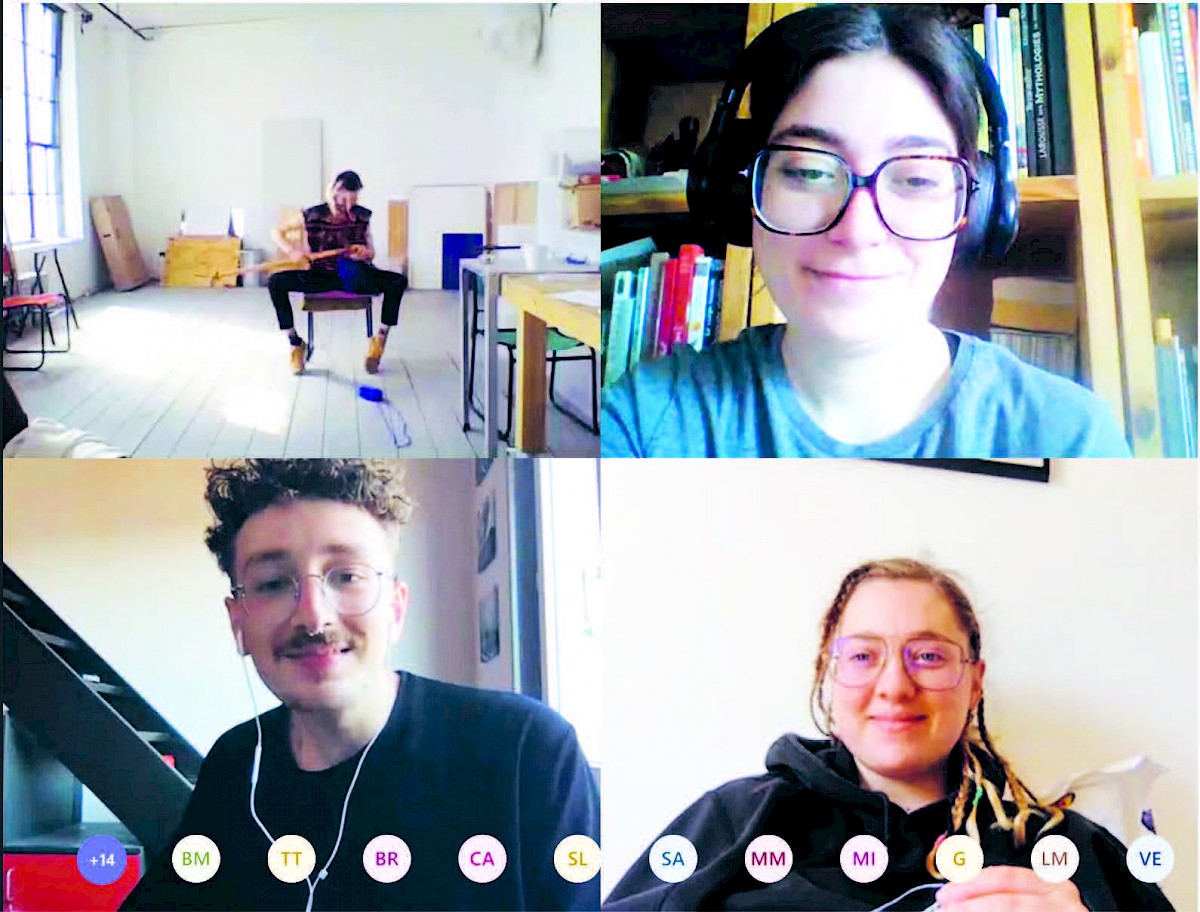
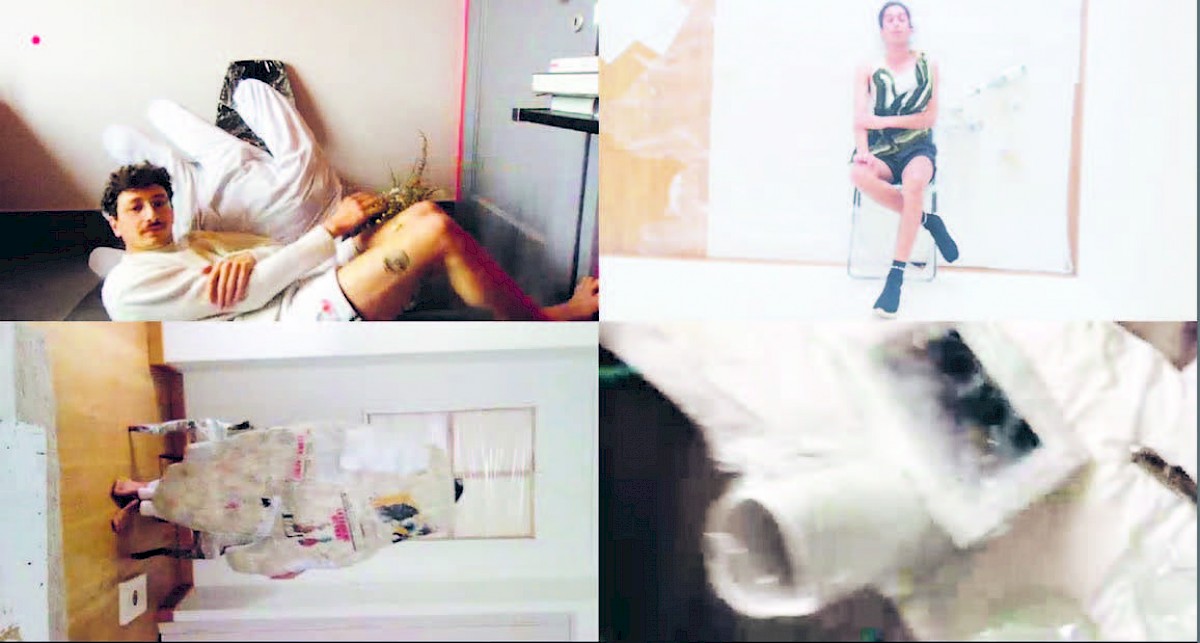
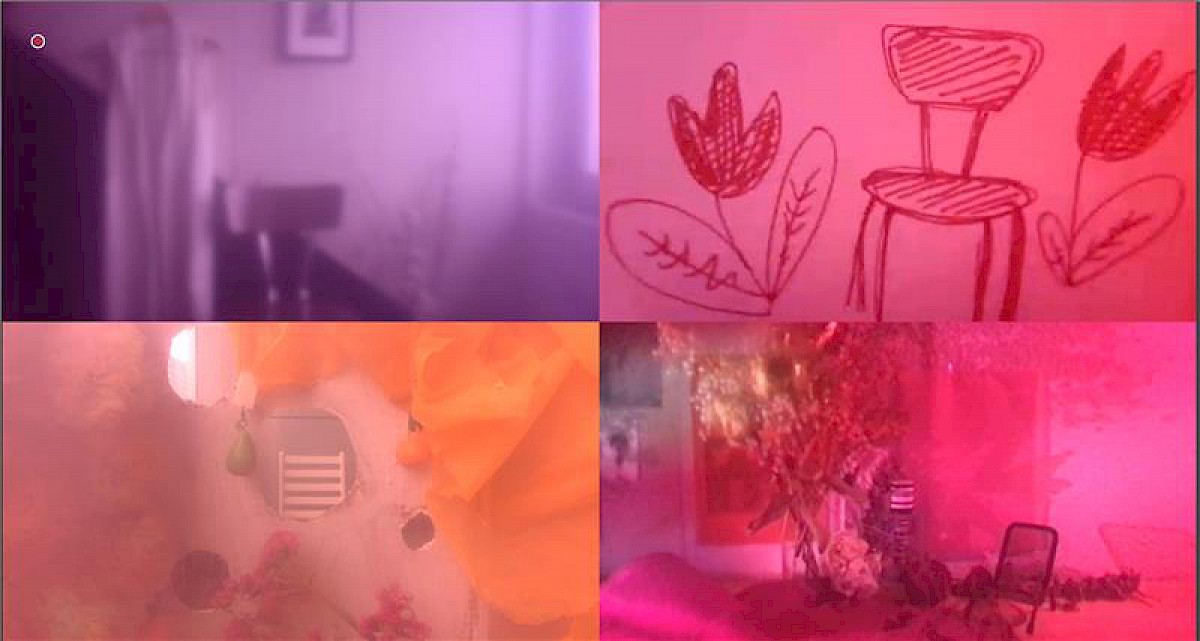
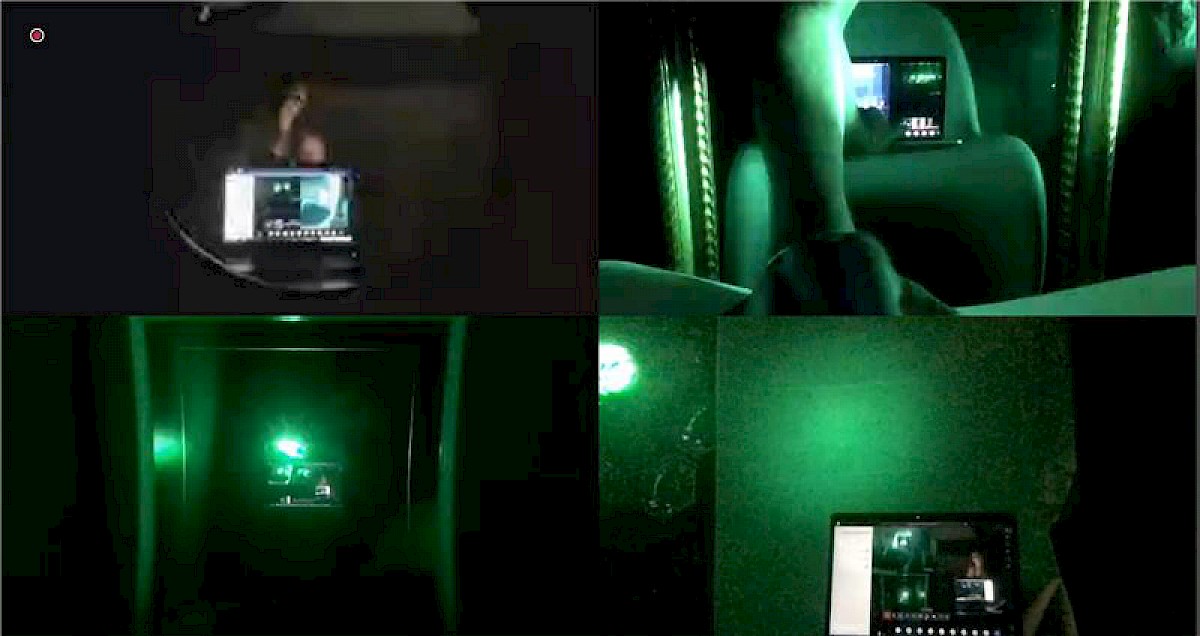
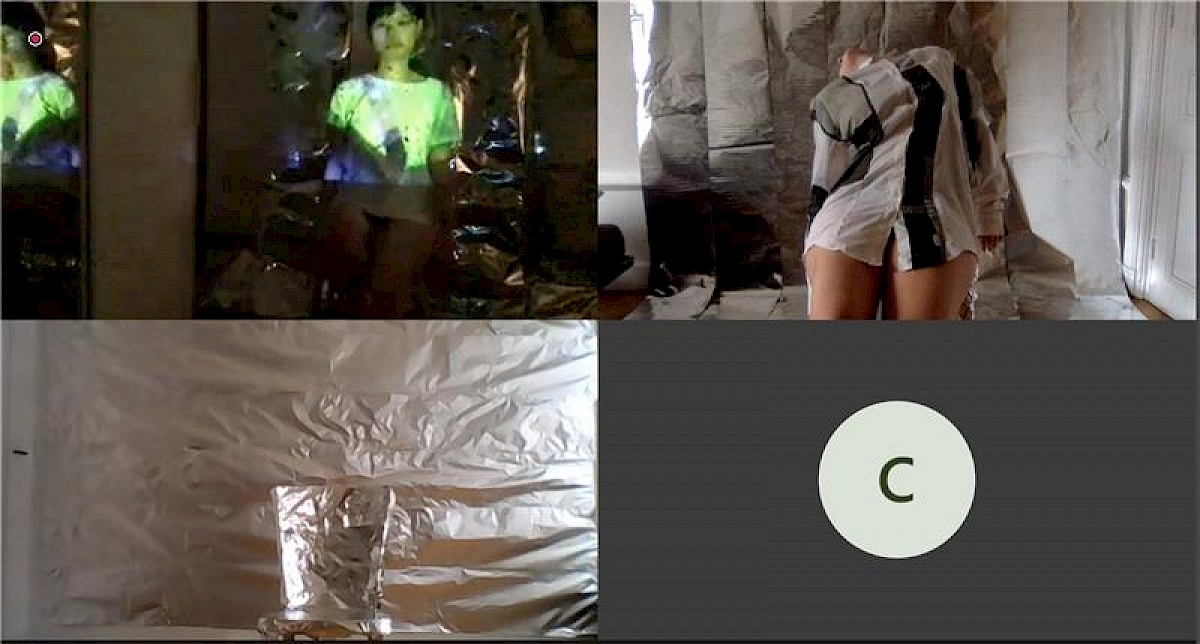
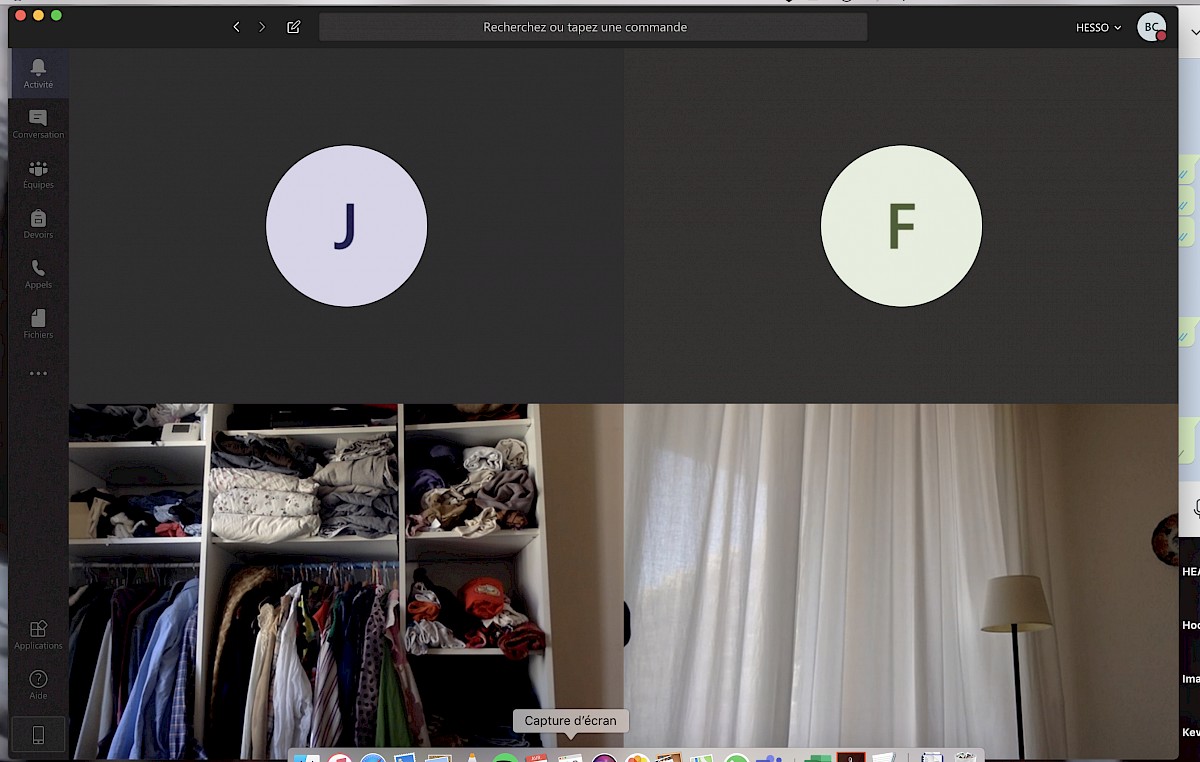
«Conférence Confinement» avec Christophe Füllemann sur le rôle de la collaboration dans sa pratique. Le jury du projet de scénographie et d’accessoirisation : par groupe de 4, les étudiant·e·x·s ont mis en scène leurs accessoires par le biais d’une performance et d’expérimentations sonores.
«Conférence Confinement» with Christophe Füllemann on the role collaboration plays in his practice. The jury of the scenography and accessories project: in groups of 4, students presented their accessories collection through a performance and sound experiments.
étudiant·e·x·s
students
Robyn Baumgartner
Timothée Bédat
Marie Boutin
Margot Briand
Julie Chauland
Alan Clerc
Jeanne De Biasio
Tess Deprez
Astrid Humbert-Droz
Maximilien Leval
Tanguy Mallet
Morris Manser
Dana Masip
Ines Migeon
Pauline Neyton
Thu Nguyen Thi Hoang
Olivia Philibert
Amelie Schouwey
Carmen Soto
Tennessy Thoreson
Agnès Eve Vadi
professeur·e·x·s et intervenant·e·x·s
tutors and guests tutors
Jasmina Barshovi
Hansruedi Burri
Valentine Ebner
Alexandre Fiette
Elizabeth Fischer
Christopher Füllemann
Iulia Hasdeu
Laurence Imstepf
Michael Jakob
Emilie Meldem
Tineke van der Meer
Jessica-Maria Nassif
Katharina Sand
François Schaffter
Sabine Schechinger
The Trojans
(Jeanne Pasquet, Jessica-Maria Nassif,
Netillo Rojas, Helena Bosch Vidal)
Robert Zacan
assistant·x·e·s
Danaé Fenger
Quentin Langlet
Madeline Ribeiro